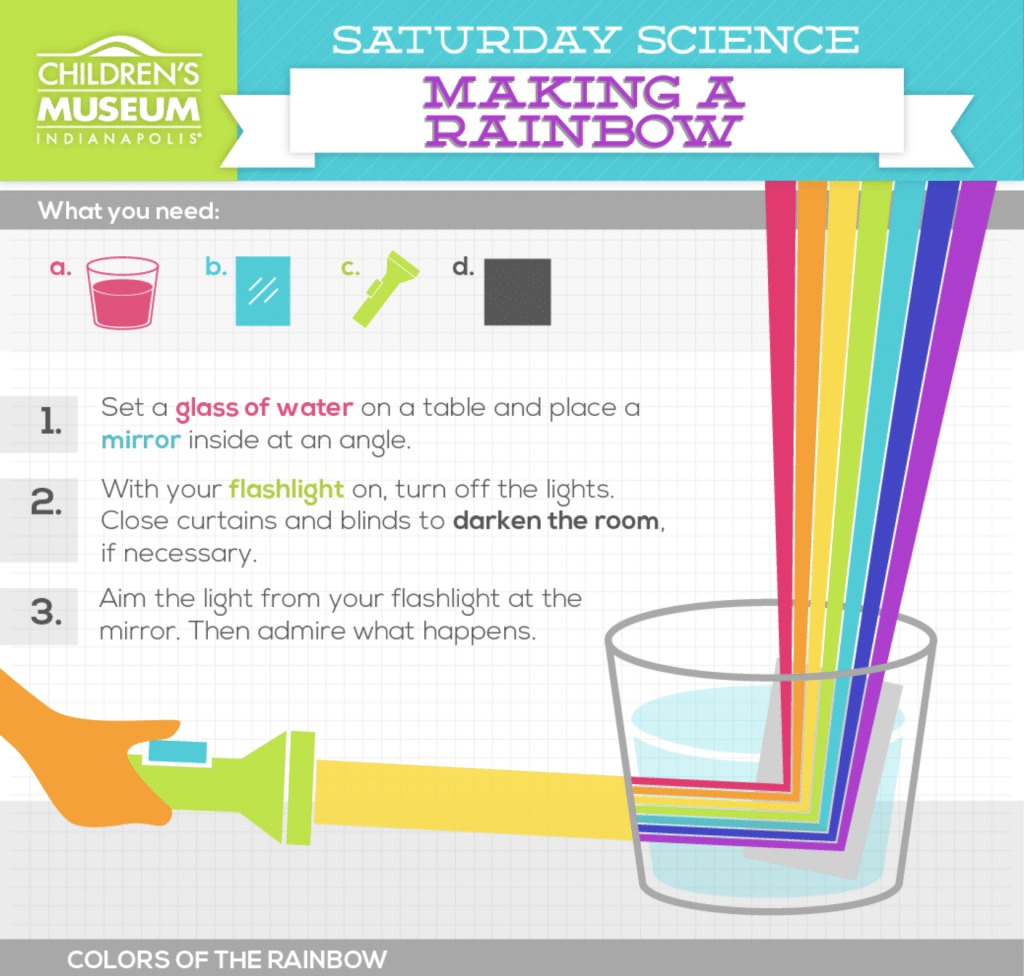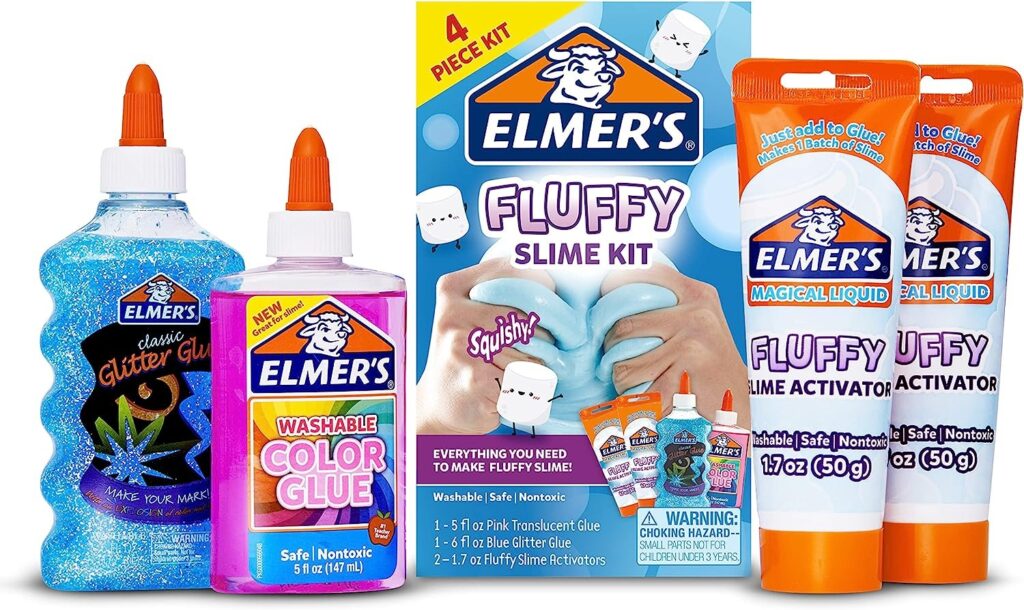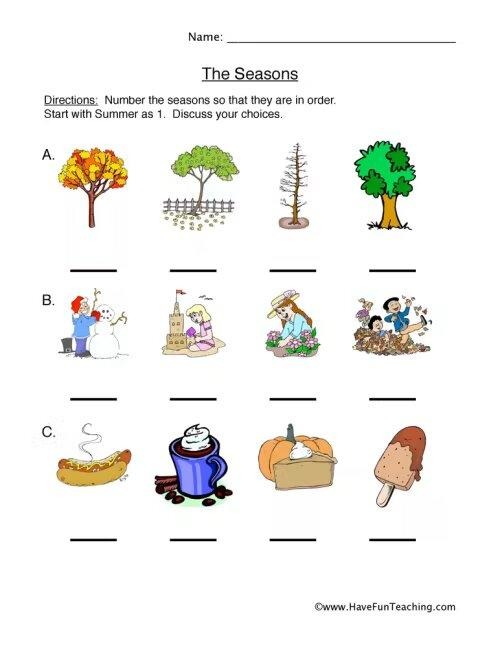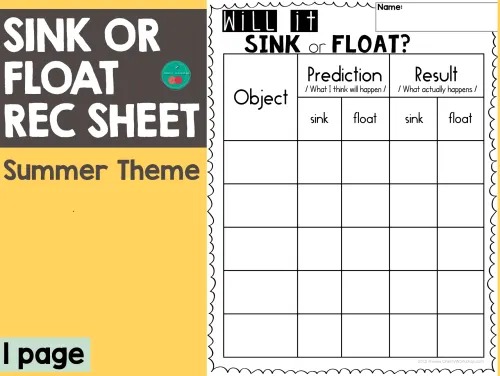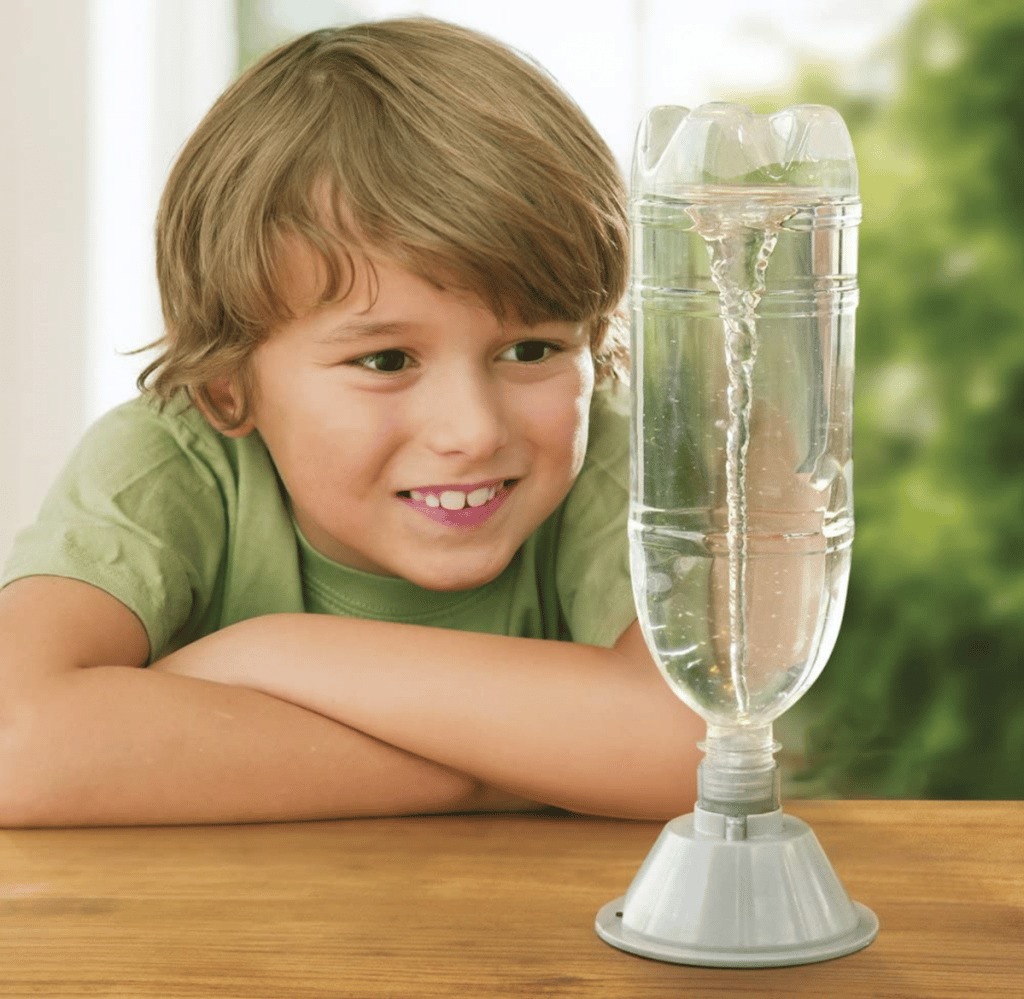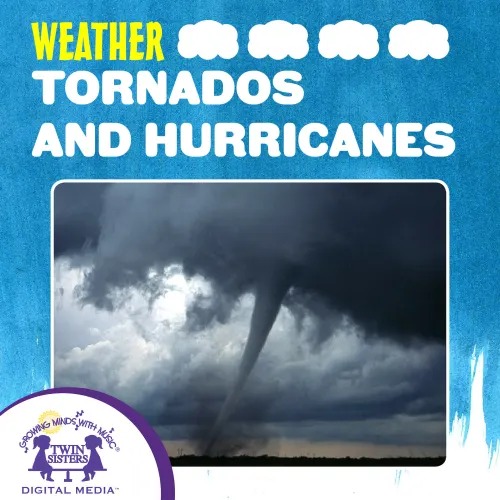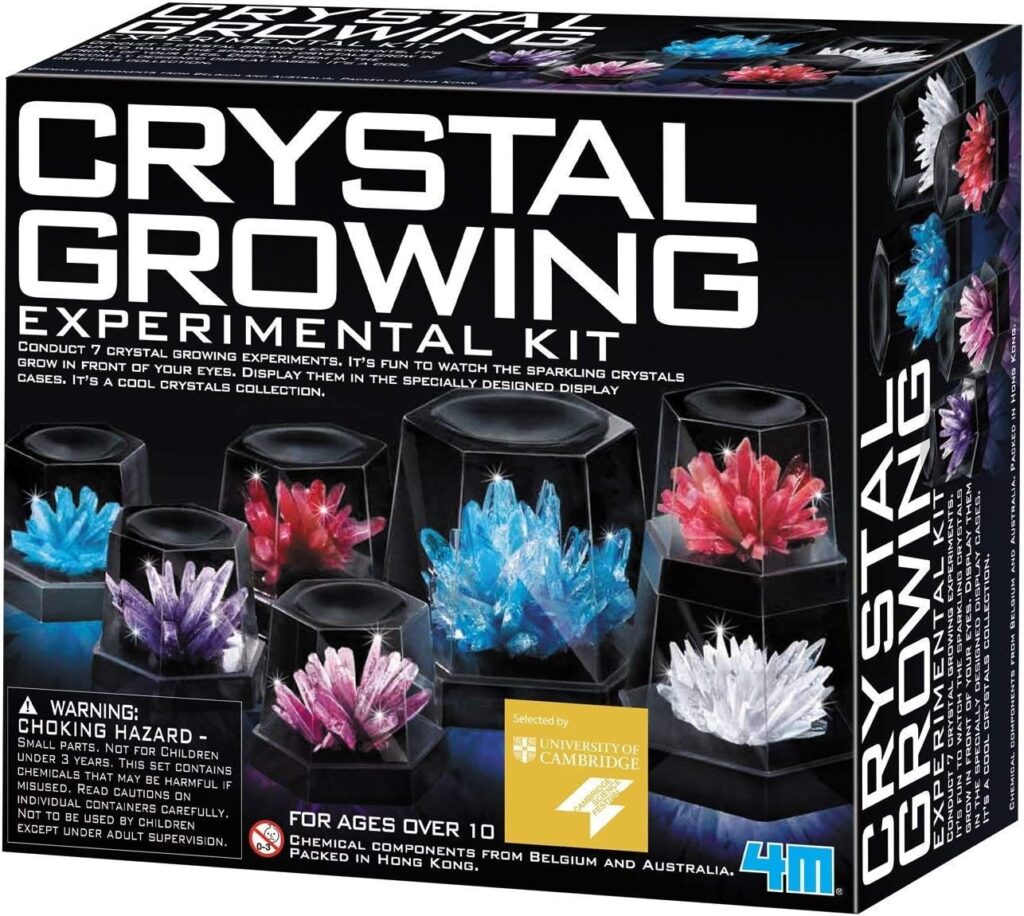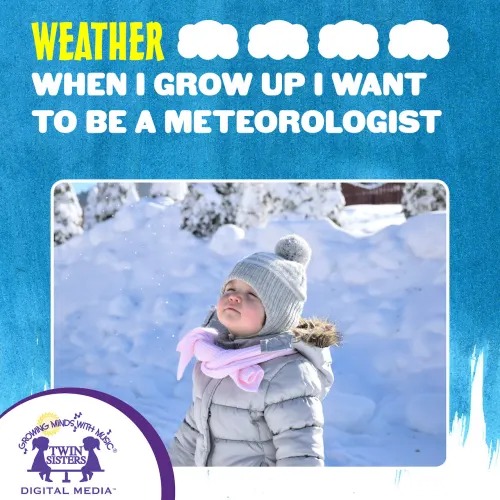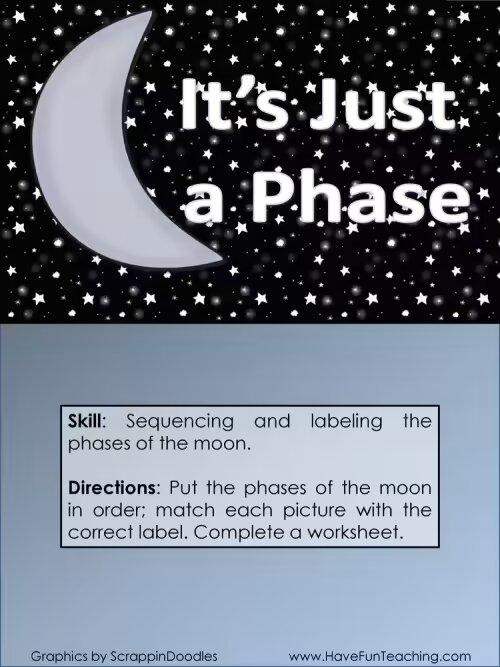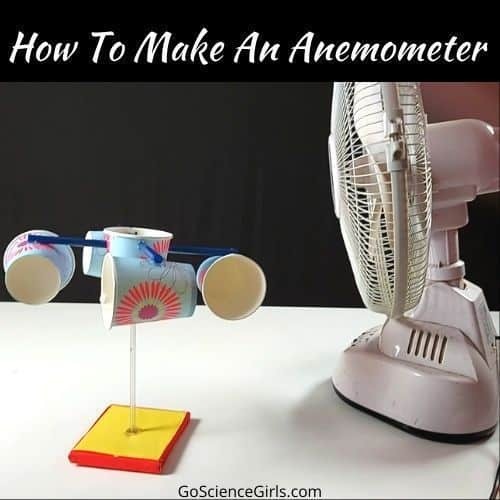There are a lot of 1st grade science projects that can help children draw conclusions and make connections to the world around them. In first grade science, children learn about topics within life, physical, and earth sciences. That means there are a lot of different types of science experiments to choose from when looking for an engaging (or easy) project for your class or at home.
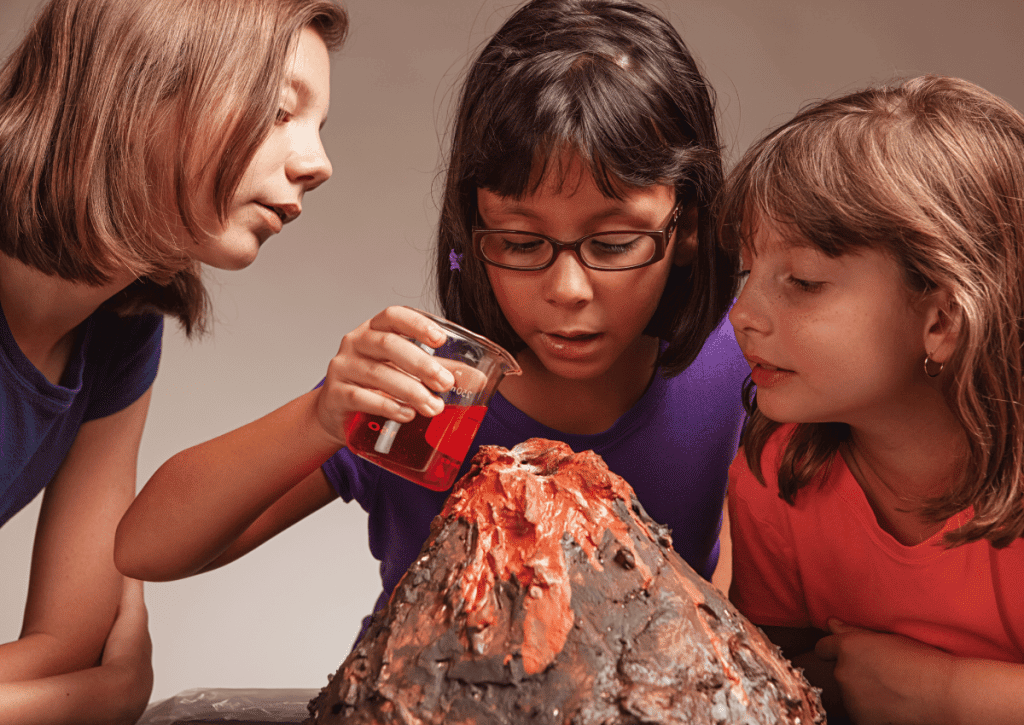
Table of Contents
- What Science Topics Do 1st Graders Learn?
- The Best 1st Grade Science Experiments
- What are some easy science projects?
- Check Out These Additional 1st Grade Resources
What Science Topics Do 1st Graders Learn?
Through the life sciences, first graders learn about the characteristics that differentiate living and nonliving things. They learn about animals and how they adapt to and interact with their surroundings.
Children at this age also learn about the seasons, weather patterns, and the water cycle through the earth sciences, along with the phases of the moon.
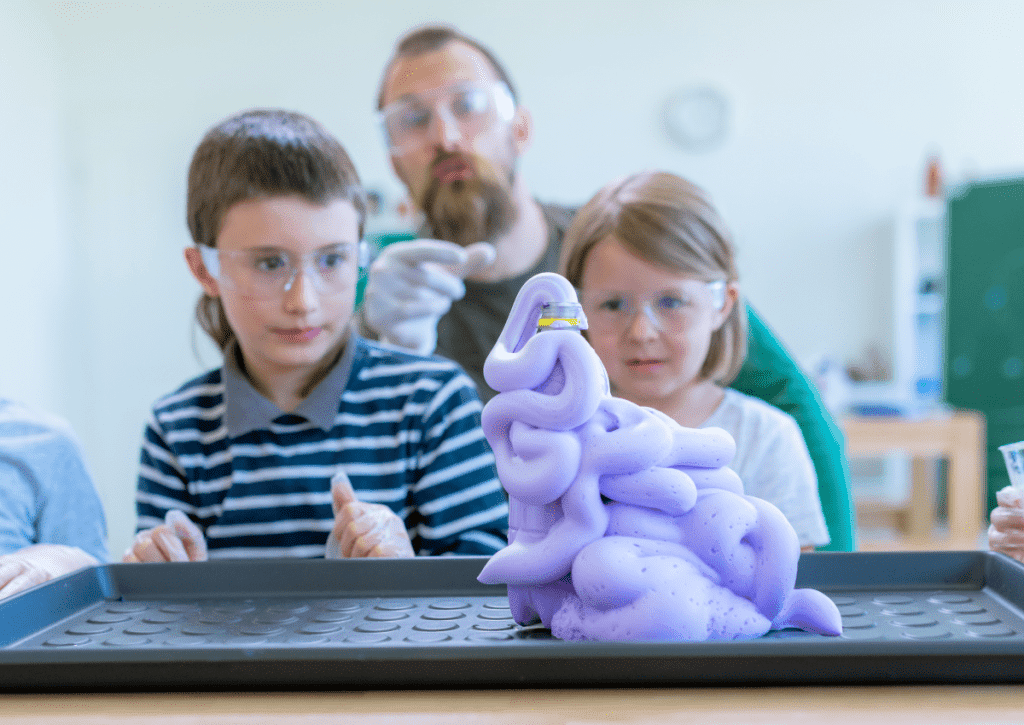
First graders are also introduced to the basic concepts of motion and forces where they explore how objects move, and they manipulate variables so they can compare cause and effect. Students this age learn how to ask a question that can be answered through investigation and observation. So a good science experiment that supports these topics starts with a testable question that children will be able to answer at the conclusion of the investigation.
In partnership with Teach Simple, whose marketplace is full of educational materials created by actual teachers (plus 50% of all revenues go to them), I’ve gathered 33 great kid-friendly science projects that your first grader will enjoy in the classroom or to pass the time by at home. Have a look!
The Best 1st Grade Science Experiments
The projects in the list below address the topics I mentioned above that 1st graders learn in school. Allow your child to take the time to manipulate variables and make observations and discuss them with you during the experiments so they can also learn how to draw conclusions.
- Make A Rainbow From Children’s Museum
First graders love to learn about rainbows. This experiment shows how white light is a combination of all the colors of the rainbow. When you shine the flashlight on the glass of water, the light waves are refracted, or bent, causing the light to break into its various colors.
Supplies you’ll need:
- Clear glass
- Water
- Flashlight
- Mirror
- Darkened room
If you’re looking for a bit more to hit this concept home, try out Teach Simple’s Colors Science, Literacy and Math Activity by KP Classroom, which provides companion activities to support this experiment.
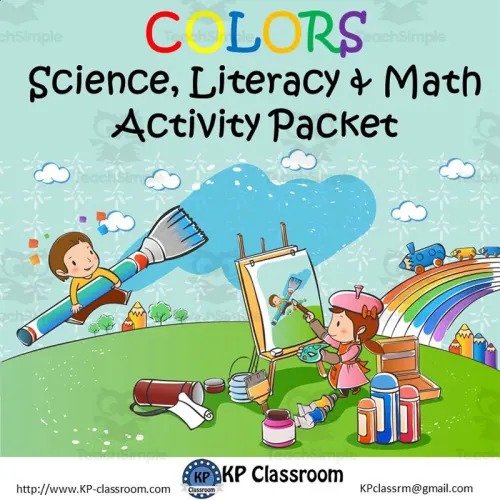
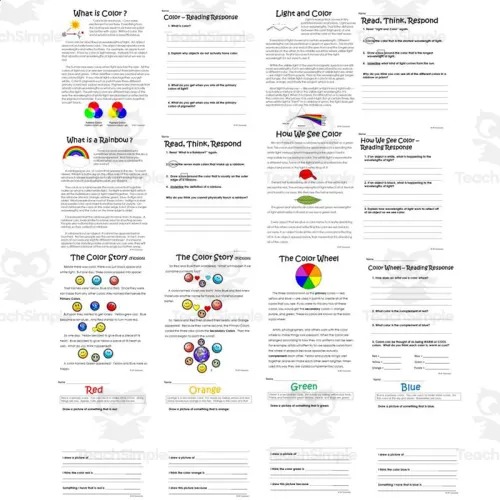
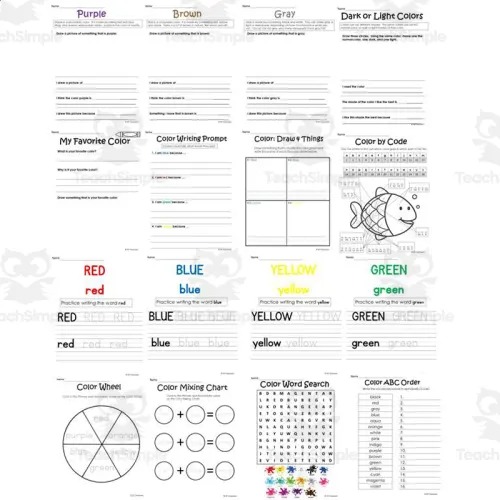
- Balloon Rocket From Scishow Kids
This is one of the most fun 1st grade science fair projects and it introduces the laws of motion and forces. During this project, students will observe when we blow the balloon up with more air, it should travel farther. Students will need to observe, measure, and record data.
Supplies you’ll need:
- Balloon
- Straw
- String (2-3 yards length recommended)
- 2 chairs or other object to tie each end of the string
Download this Hands-On STEAM- Physical Science e-book for supporting materials by Classroom Complete Press.

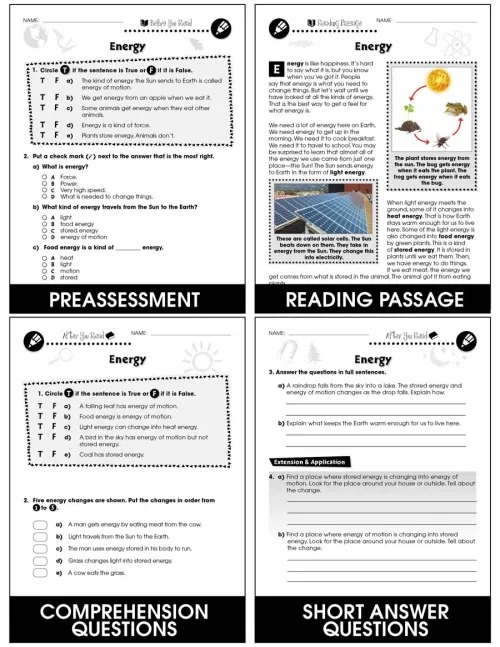
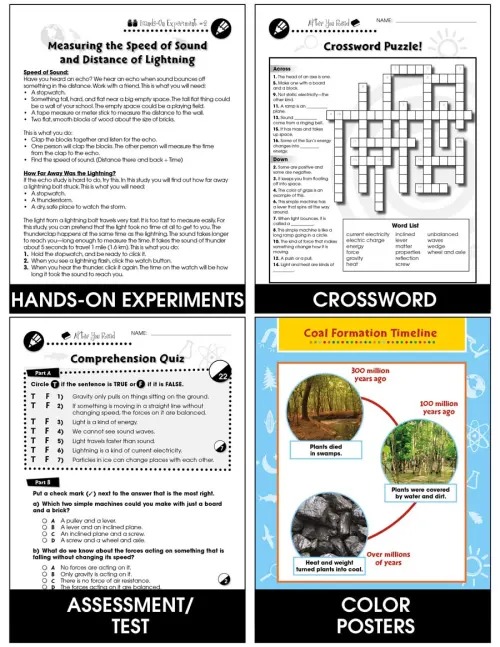
- Fluffy Slime Experiment From Elmer’s Store
This is a fun and easy experiment where 1st graders learn how to mix multiple substances to create one new substance. I like the Elmer’s Fluffy Slime Kit set linked below as it makes two batches of soft, fluffy slime in two colors.
Pair this experiment with activities from this Hands-On- Physical Science: Matter & Materials unit for a lesson about states of matter by Classroom Complete Press. Have students discuss which state slime might fit into and why.
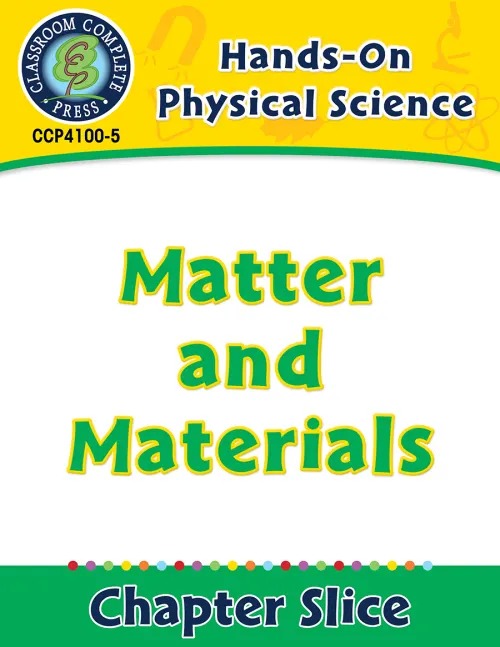
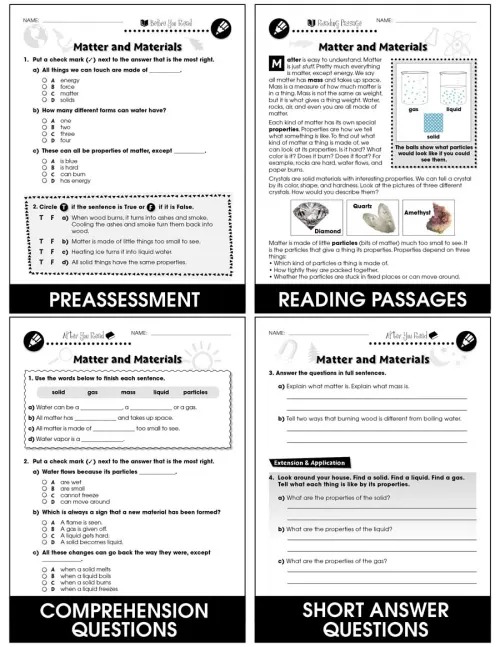
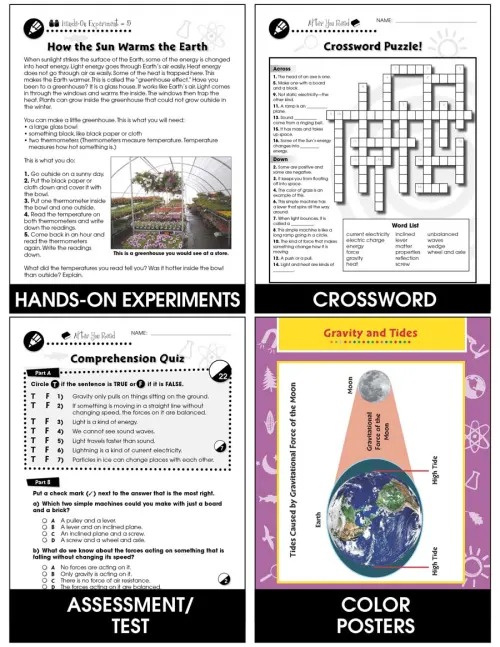
- Crayon Box STEM Activity By The Core Coaches

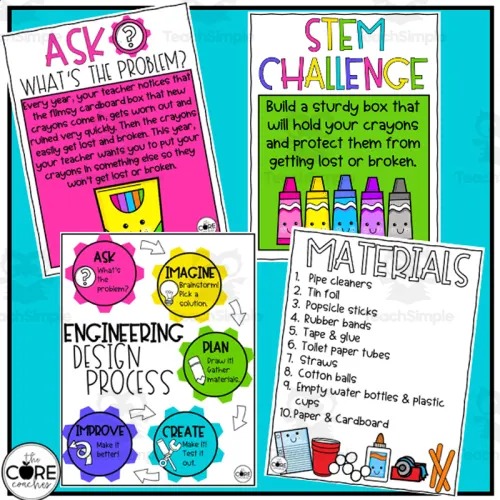
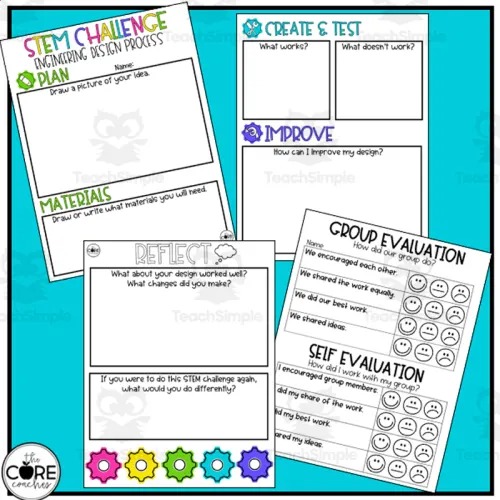
This project is designed to help your students think outside the box and learn how the world works. It helps students explore the engineering design process using common materials.
This digital download includes a list for material recommendations, but this challenge can be done with materials you have on hand, such as:
- Paper
- Pipe cleaners
- Cups
- Popsicle sticks
- String
- Scissors
- Cotton balls
- Cardboard
- Rubber bands
- Glue
- Tape
- Leaf Chromatography Project From Lostronaut’s Store
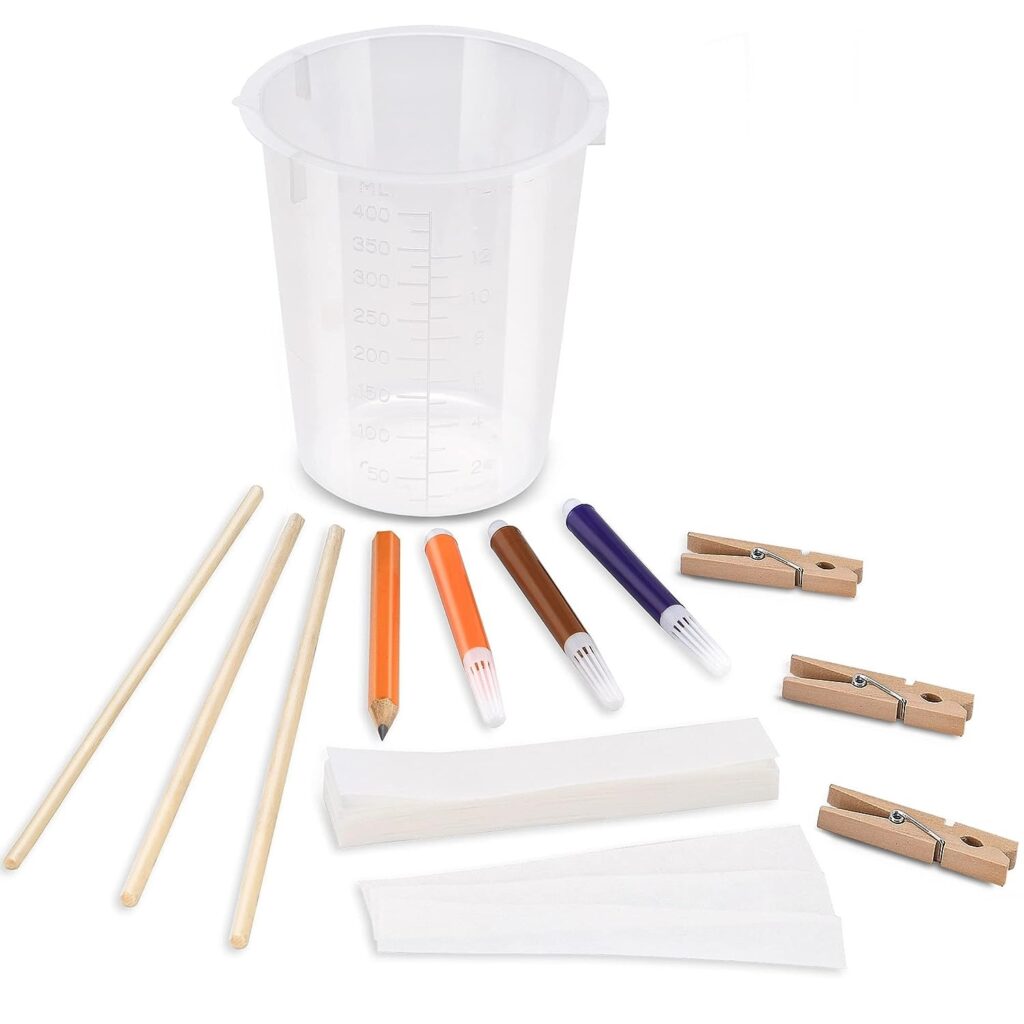
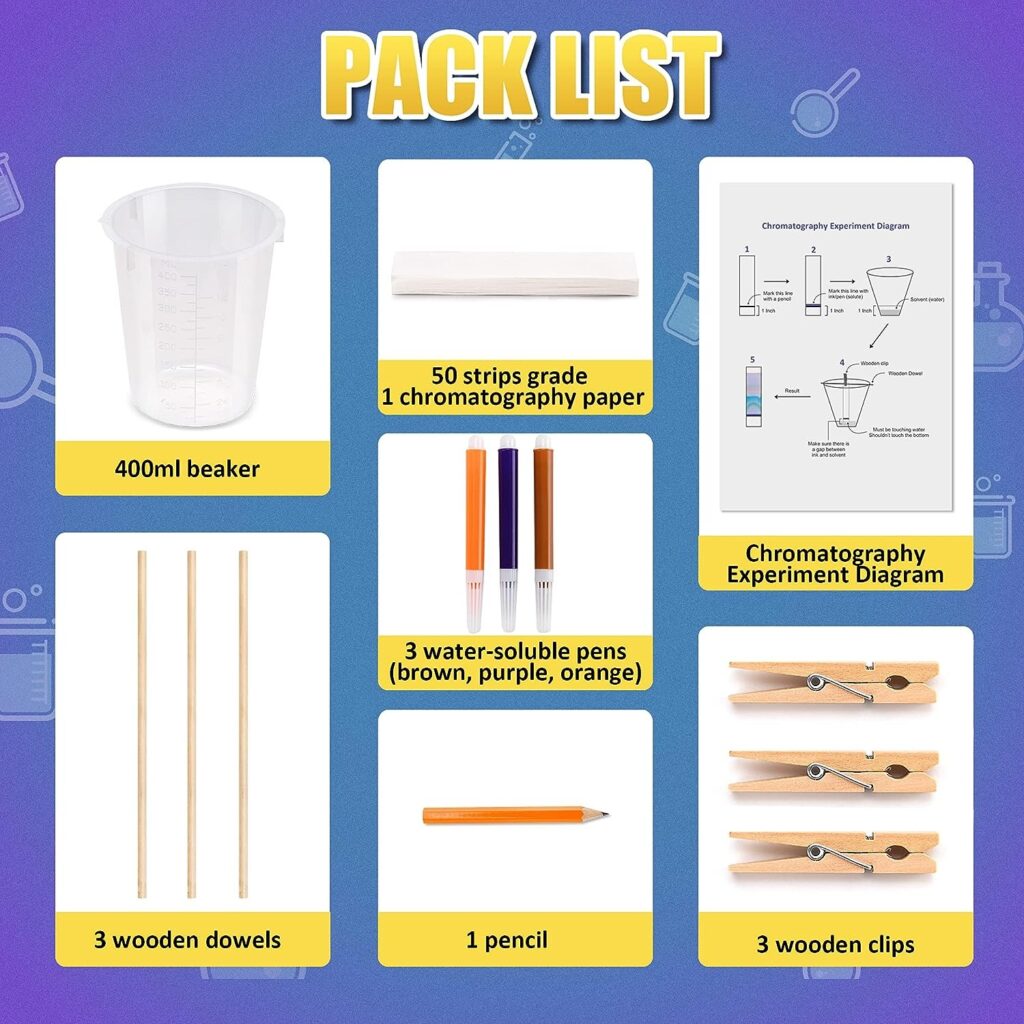
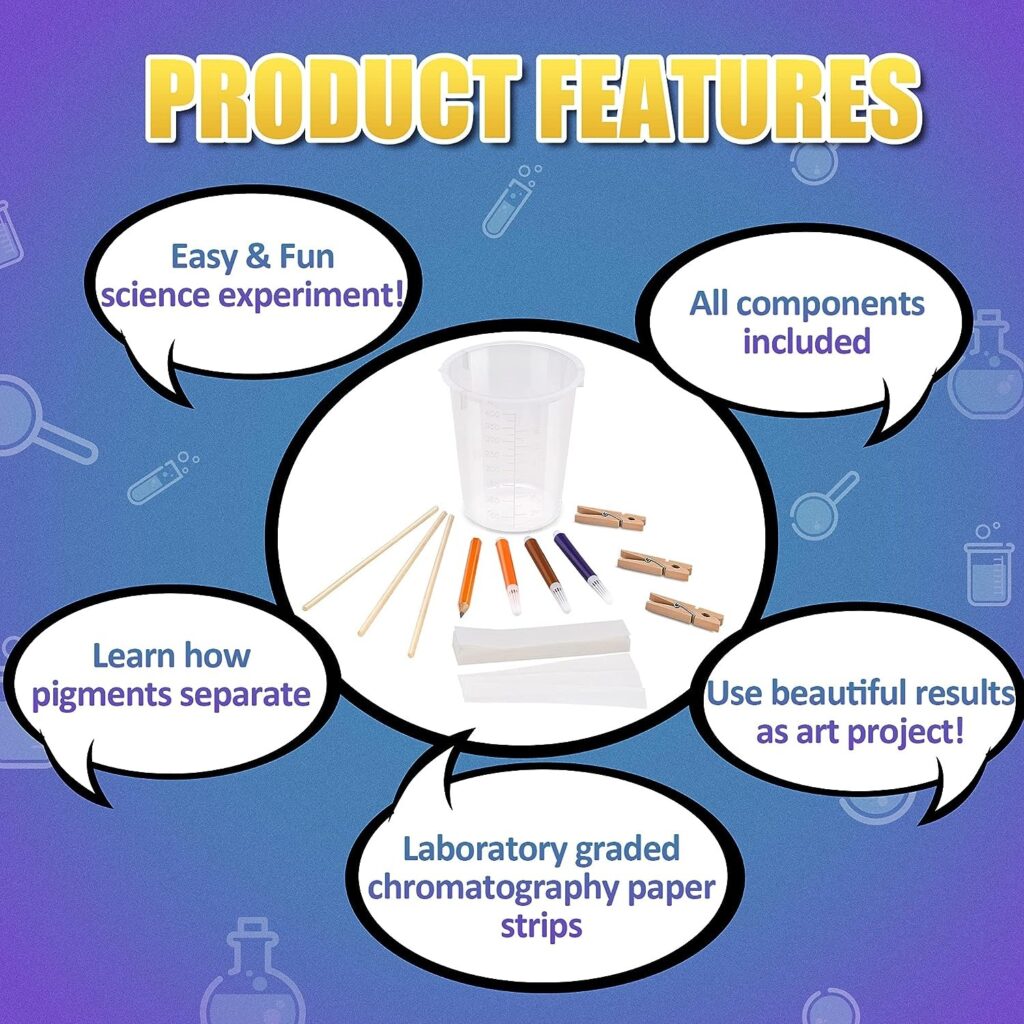
When learning about the four seasons, a natural question for first graders to ask is why leaves change colors in autumn.
To start this project, use a Seasonal Cycles Worksheet by Have Fun Teaching, to develop background knowledge prior to the experiment.
Next, have students go outside and collect different leaves. Break the leaves up, put the pieces in a cup, and add rubbing alcohol. Then use the chromatography kit linked below to set up the strips and watch the color bleed up. Discuss the different colors that separate out during the chromatography process.
- Dancing Rice From Farmingdale Library
Dancing rice is the perfect chemistry experiment for first graders because it demonstrates a chemical reaction. When vinegar is added to baking soda, the hydrogen ions in vinegar react with the sodium bicarbonate in the baking soda and releases gas.
Supplies you’ll need:
- White vinegar
- Baking soda
- Rice
- Clear jar
- Water
- Optional: Food coloring
- Shoebox Guitar By Twin Sisters Digital Media

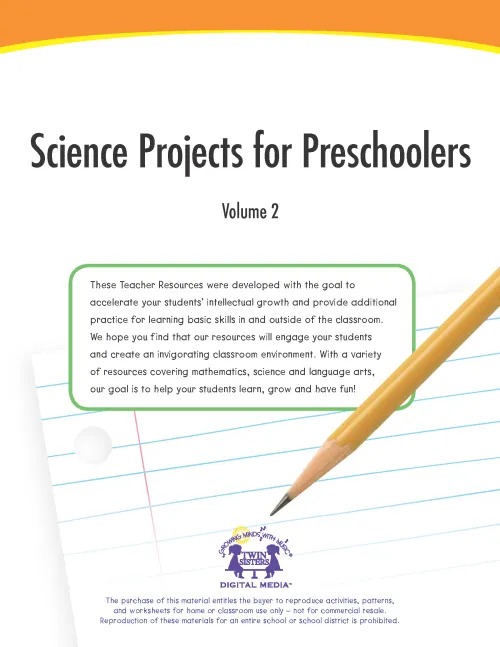
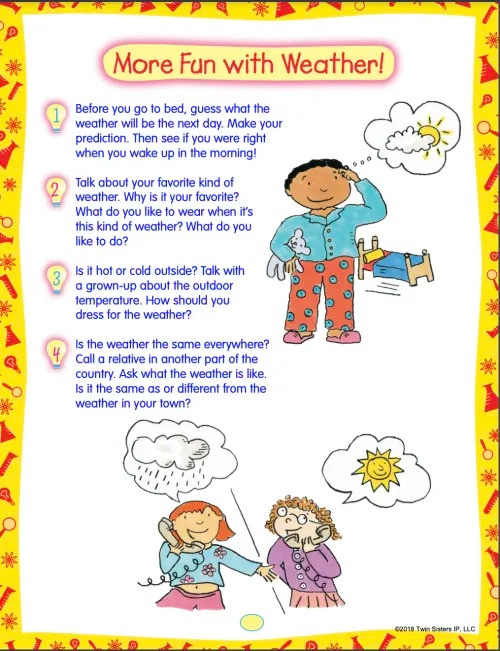
What’s better than conducting a science experiment about sound? Use the shoebox guitar project to teach students about vibrations and how sound travels. Then make some classroom music and dance out all that 1st grade energy.
Supplies you’ll need:
- Shoebox
- Markers
- Scissors
- 4 rubber bands of varying thickness
Living vs Nonliving: Yeast vs. Sand
This first grade science experiment compares the properties of yeast and sand which look similar, but one of them is living and the other is nonliving.
Use this activity to spark a conversation about the properties of living and nonliving things and what all living things have in common.
This STEM Workbook and Living and Nonliving Things activity pack provide worksheets and activities to support learning about living vs. nonliving things.
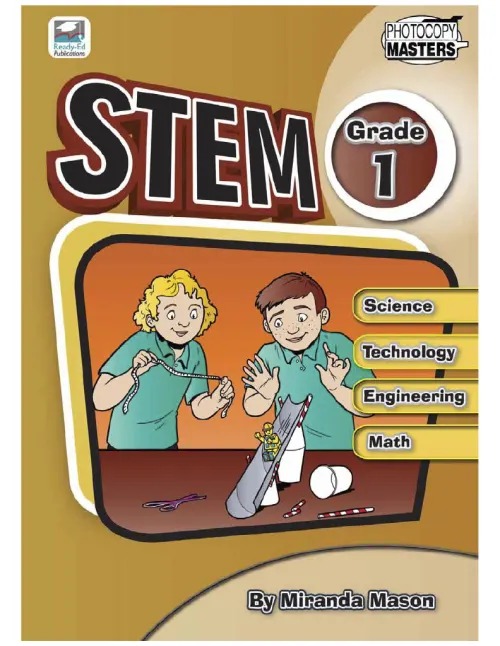
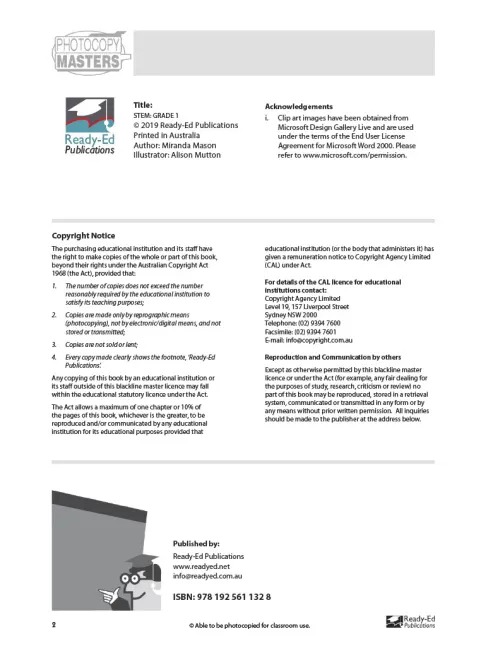
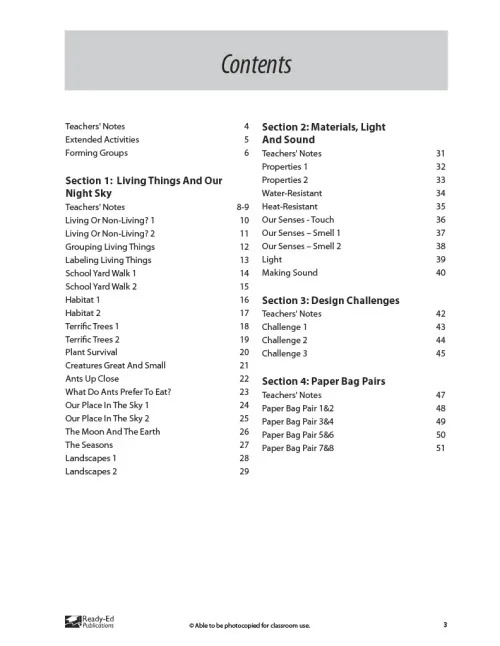
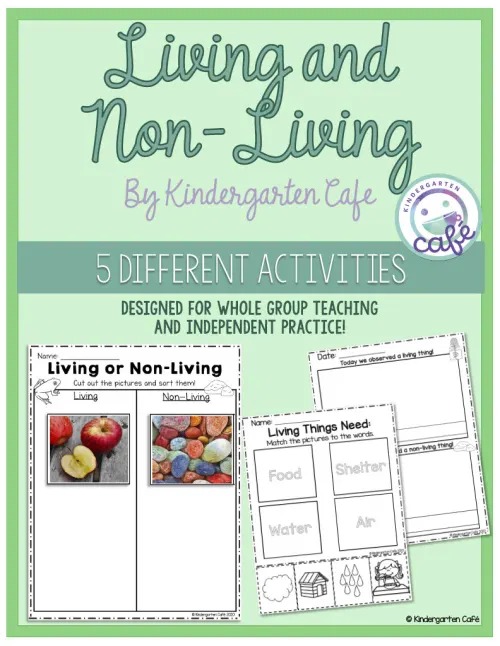
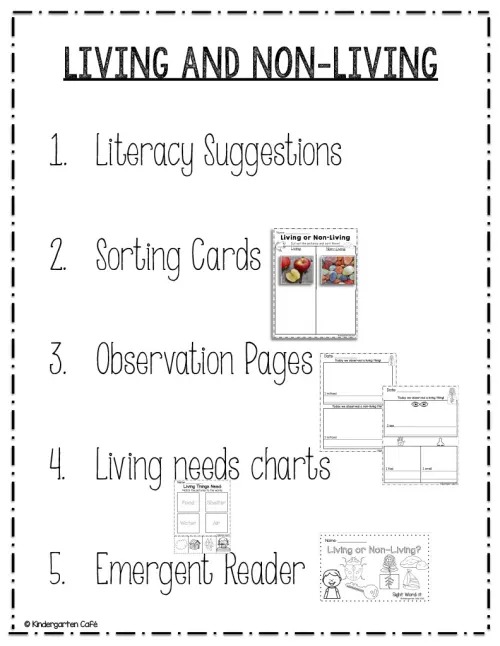
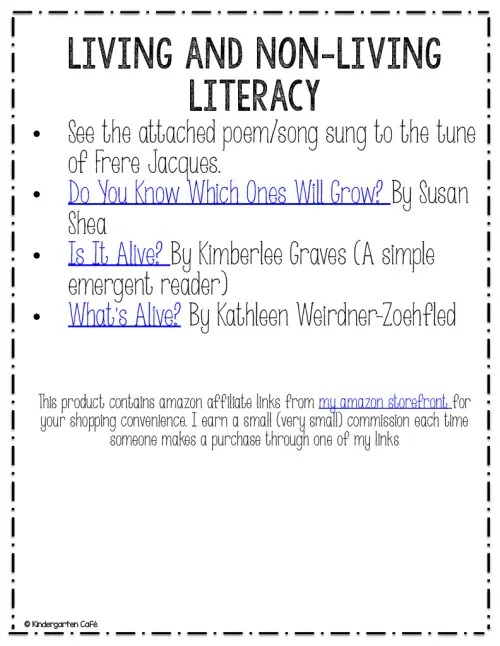
- Sink Or Float From Mayta The Brown Bear
This fun lab is a great introduction to the concept of density.
Gather whatever items you have on hand and a large bin of water. Have students make predictions about which items will sink and which will float. They can test objects like a small sheet of tinfoil, a pebble, a flower, a leaf, a stick, a marble, etc.
You can also use this Sink or Float Recording Sheet to collect data by Cherry Workshop.
- Blubber Experiment From Learn With Mrs.B
In this experiment, students investigate the insulating properties of shortening or petroleum jelly as a substitute for animal fat.
Supplies you’ll need:
- Plastic zip baggies
- Lard (shortening) or petroleum jelly
- Bowl of ice water
Combine this experiment with a lesson about arctic animals using some Polar Animals Flashcards by Fiddleticks Education or with this animal science unit All About Polar Bears to teach them how arctic animals stay warm in their polar environment by Simply Schoolgirl.
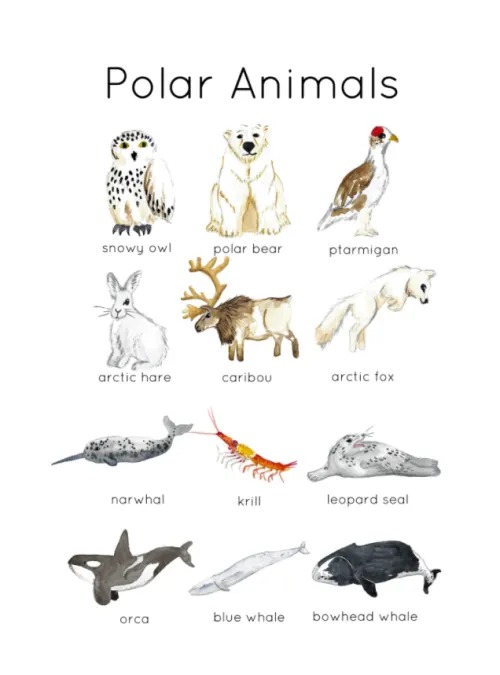
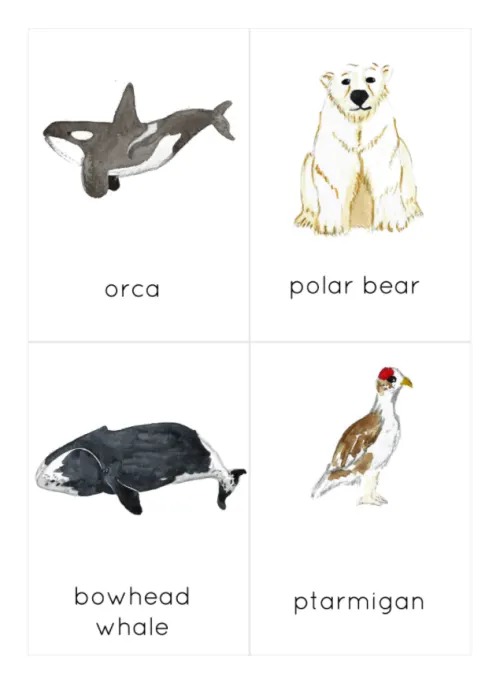
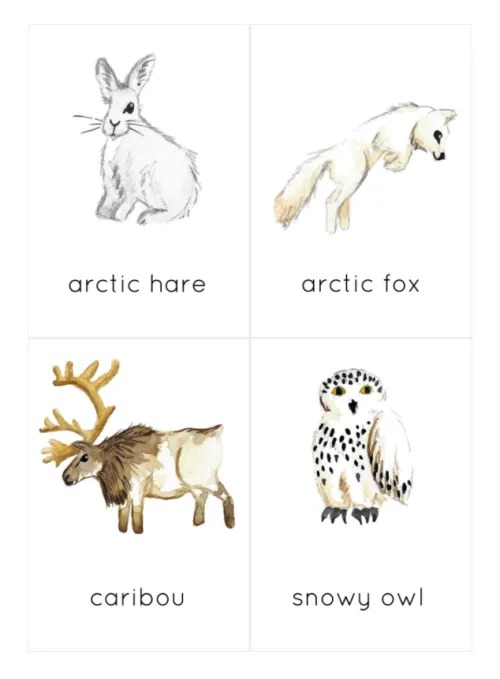
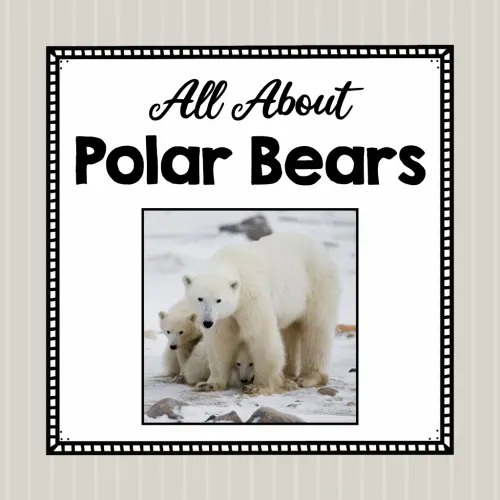
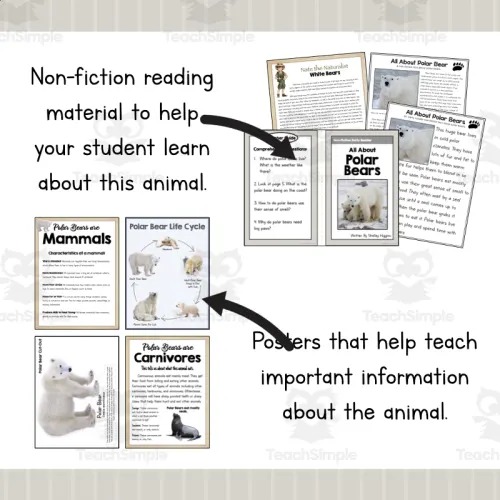
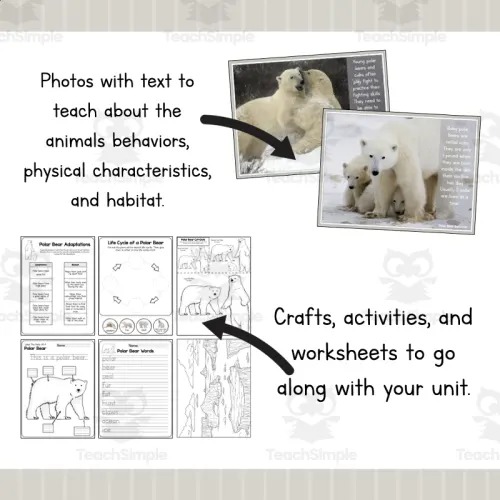
- Fossil Factory By Twin Sisters Digital Media
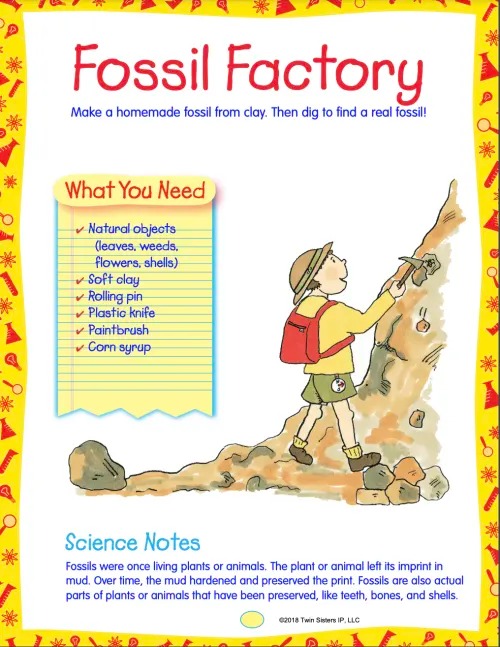
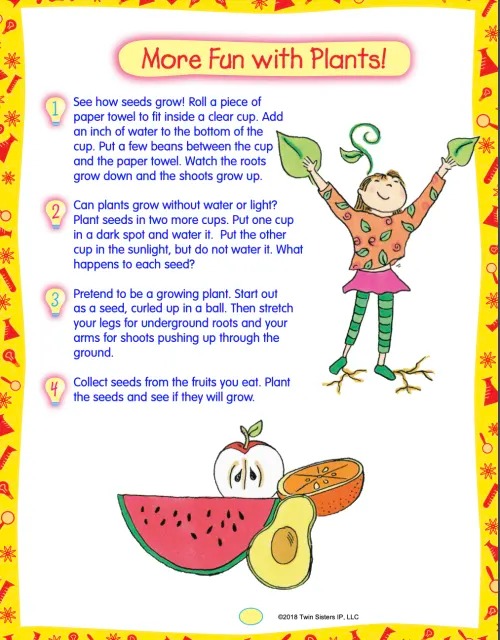
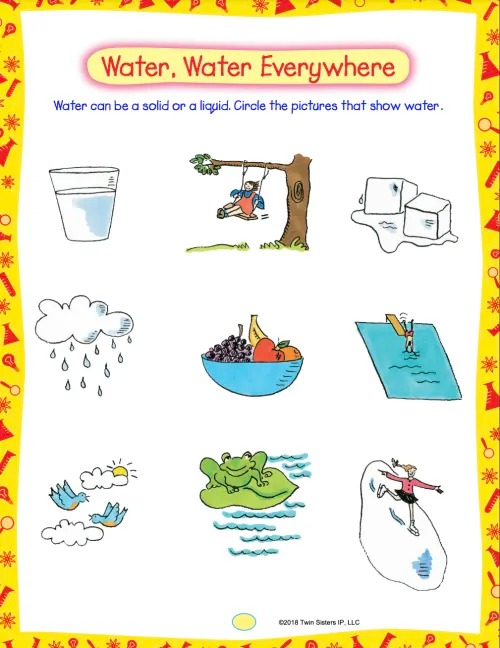
Get your students ready for a fossil adventure. First graders can design their own fossil out of clay and then go on an outdoor field trip to dig around for fossils outside after learning a bit more about them.
Supplies you’ll need:
- Natural objects
- Soft clay
- Rolling pin
- Plastic knife
- Paint brush
- Corn syrup
- Cloud In A Jar Experiment By Lilibette’s Resources
When learning about either weather or the water cycle, creating a cloud in a jar is the perfect activity to show children how clouds are formed when warm water vapor rises toward cooler temperatures and attaches to condensation nuclei. Specific instructions on how to make the cloud in the jar are available in the Clouds Mini Project Resource Pack below.
- The Penny Experiment From Kids Fun Science
This super easy experiment demonstrates the properties of water cohesion and surface tension. Start with a testable question like “How many drops of water fit on the head of a penny?”
Children should make their predictions. Let students design an investigation to answer the testable question. This experiment lends itself to teaching the scientific method.
Supplies you’ll need:
- Pipette
- Cup of water
- Penny
- Create Your Own Tornado From The 4M Store
Who doesn’t love learning about how storms form? First graders will have fun putting their model together and simulating a tornado from this kit full of everything you need.
For further learning, have students listen to an audiobook, Tornados and Hurricanes by Twin Sisters Digital Media
- How Many Pennies Can My Boat Hold? From KSU iTeach
In this experiment children will design and construct their own tinfoil boat. Then they will predict how many pennies the boat can hold before it sinks.
This experiment demonstrates the property of density.
Supplies you’ll need:
- Tin foil
- Pennies
- Bucket of water
A Water Experiment Journal by Kindergarten Cafe that includes a worksheet for students to collect data and record their observations is a great supplement.
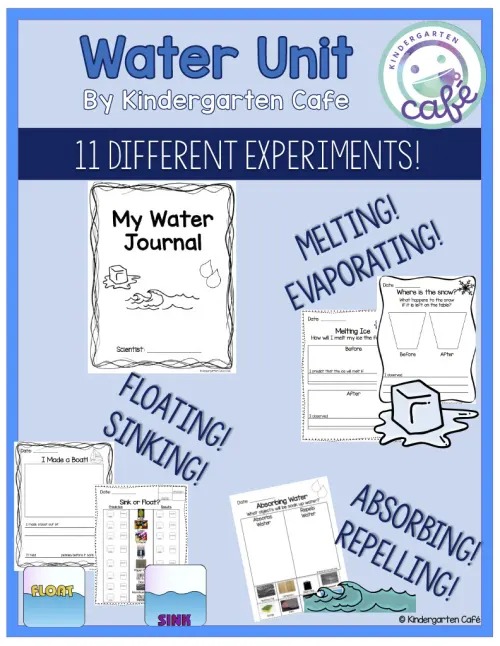
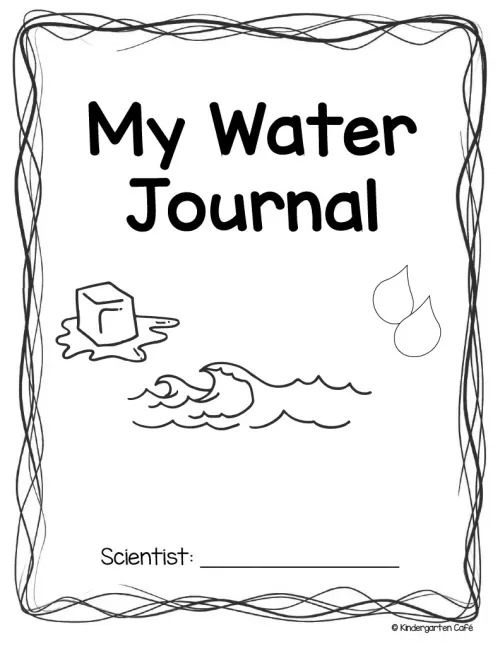
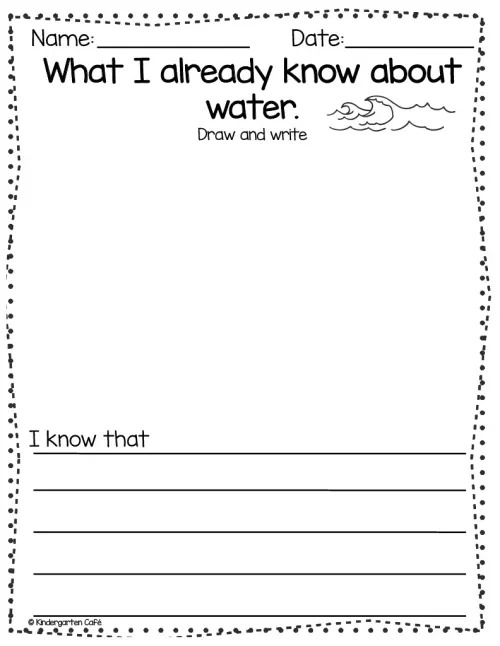
- Making Rock Candy From The Sci Guys
This chemistry experiment shows students how increasing water temperature causes sugar to dissolve. You can also show your children how sugar doesn’t dissolve in cold water. As you increase the temperature, it begins to dissolve, creating a new solution that results in a sweet treat everyone can enjoy later.
Supplies you’ll need:
- Sugar
- Pot
- Tall glass
- Clothespin
- Popsicle sticks
- Optional: Flavoring
- Elephant’s Toothpaste From Michigan Medicine
Students will learn in this project how different substances react to create a new substance, and, in this case, heat energy. The yeast removes the oxygen in the hydrogen peroxide, causing bubbles. Heat energy is released, creating what is known as an exothermic reaction.
Supplies you’ll need:
- Food coloring
- Plastic water bottle
- Hydrogen peroxide
- Liquid dish soap
- Measuring cup
- Paper plate
- 1 tablespoon of dry yeast
- Warm water
- Grow Your Own Crystals From The 4M Store
A favorite 1st grade science project is growing crystals. You can do this with a pre-packaged kit, like the one linked below, or with a variety of household items, including Borax.
Crystals form when water evaporates from a mixture. You can also teach your first graders about the different geometric shapes that crystals form. And this can be paired with a lesson about evaporation using these The Water Cycle Printables by My Kind of Crazy.
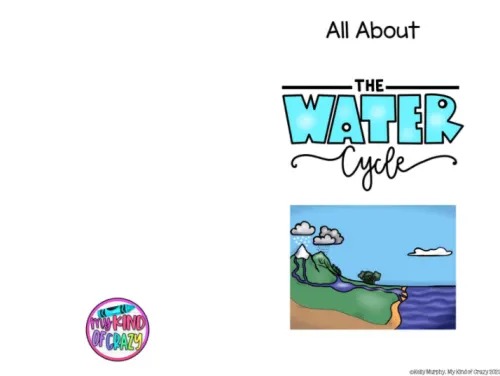
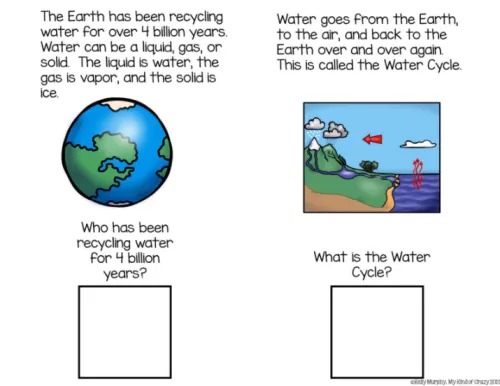
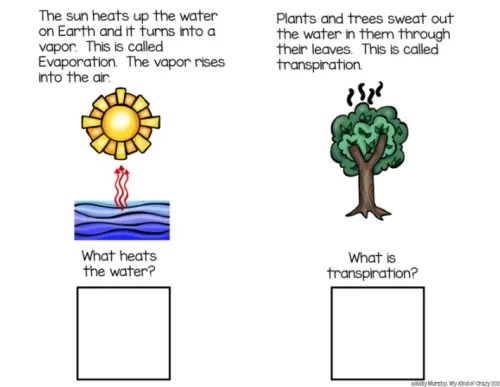
- Shiny Penny Experiment From SciShow Kids
This experiment introduces the concept of variables in a way that first graders can easily understand. Students will use a number of different substances to polish dull pennies. The independent variable is the substance being tested to polish the penny. This is the variable that we are manipulating or changing.
Supplies you’ll need:
- Liquid dish soap
- Can of cola
- Vinegar
- Lemon juice
- Salt
- Ketchup
- Tarnished pennies
- Build Your Own Rain Gauge From Community Play Things
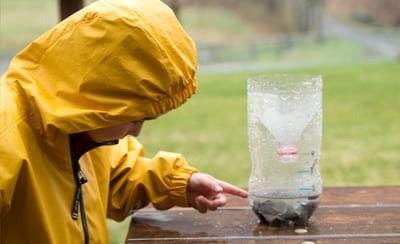
When learning about weather, have students make their own rain gauges. When it rains, they can make predictions about how much rain will fall and collect data on the actual amounts.
Resources for this lab and other weather related activities can be found in Teach Simple’s Hands-On STEAM- Earth and Space Science Grades 1-5 by Classroom Complete Press.
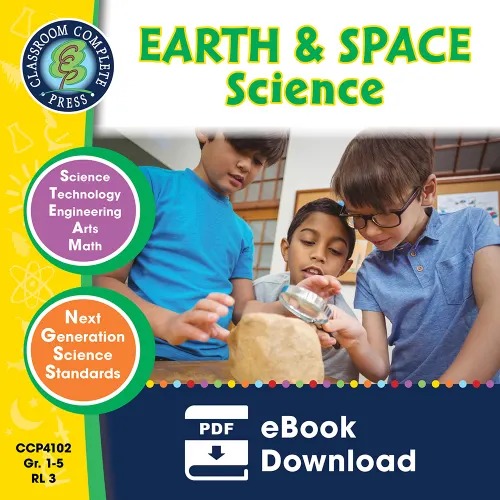
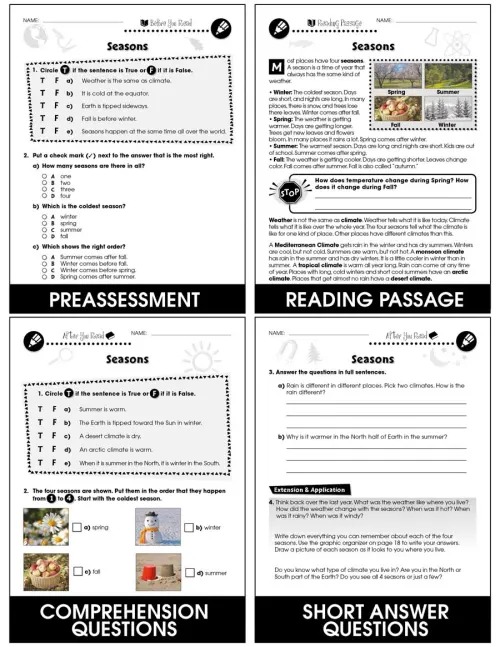
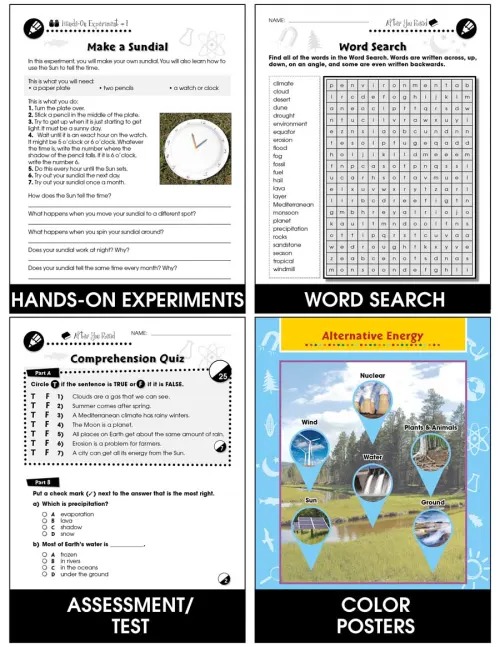
Students may also be interested in the audiobook When I Grow Up, I Want to Be a Meteorologist to supplement the concepts learned by Twin Sisters Digital Media.
- Capillary Action Of Water In Plants By Madeleine Rein
If you’re looking for a fun way to demonstrate how plants take in water from the roots and distribute it to the rest of the plant, this is an easy and engaging experiment for first graders.
Supplies you’ll need:
- White flower
- Jar of water
- Food coloring
To learn more about plants and their parts, you can couple the experiment with the book: Plant, Plant, What Do You See by Kindergarten Cafe.
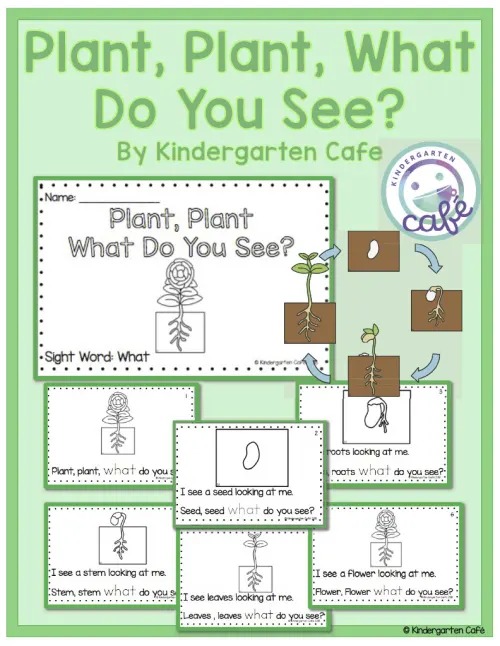
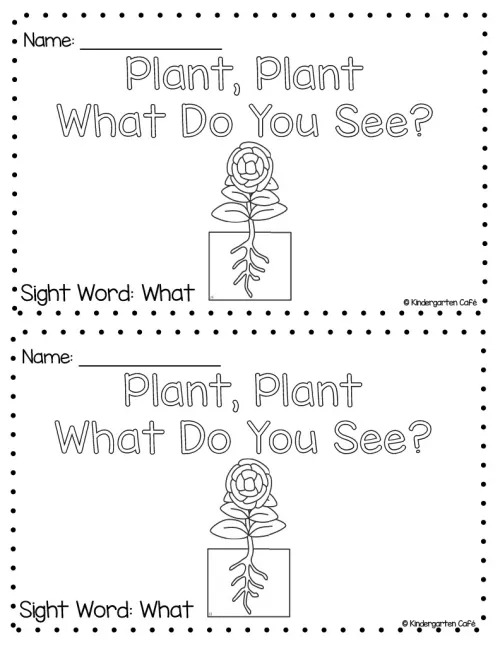
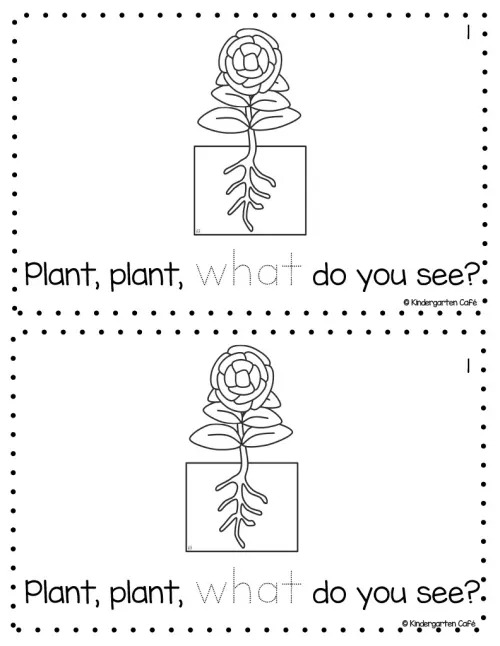
- Jumping Frogs (Static Electricity) From Science Sparks
This is a fun take on using a balloon and rubbing it against fabric to create static electricity.
Have students predict how many paper frogs will be attracted to and stick to the balloon. Another variation on the lab is to have students time how long the frogs stick to the balloon.
Supporting materials to teach about static electricity can be found in this resource: Hands-On Physical Science: Electricity and Magnetism.
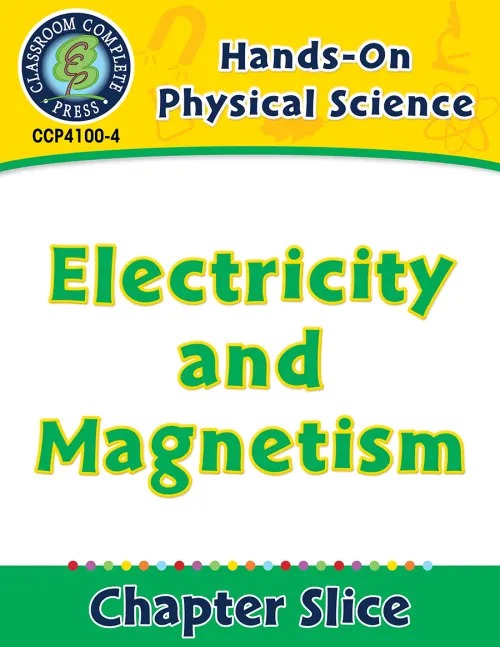
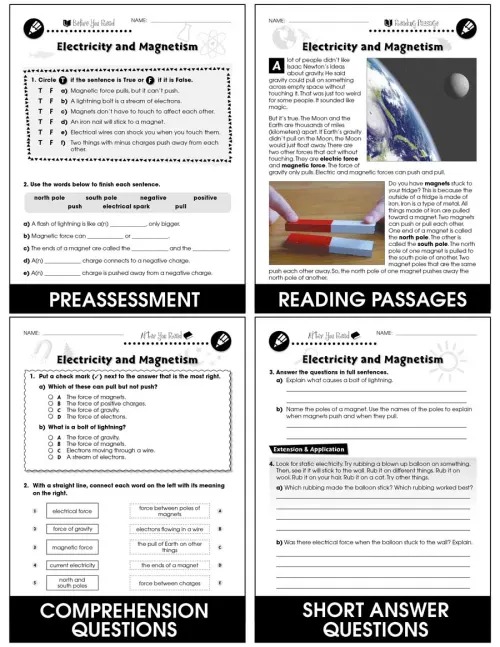
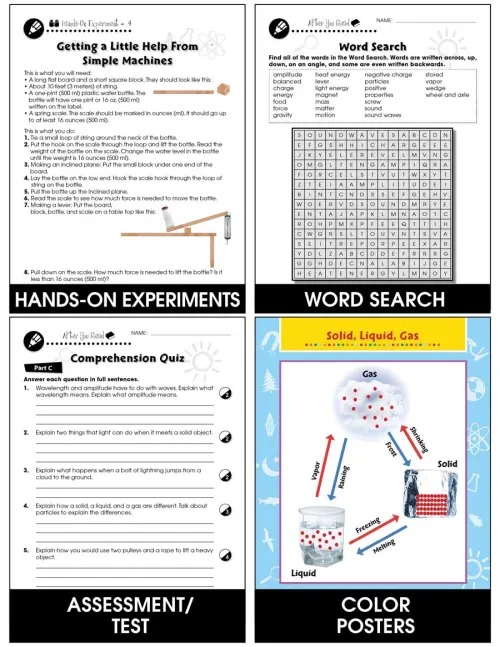
- Popsicle Stick Catapult From stlDenise3D
Children will create a catapult with a plastic spoon, popsicle sticks, and rubber bands.
After constructing the catapult, ask children to choose objects to launch. Some suggestions include marshmallows, cotton balls, and other soft items.
Students can predict which objects can be launched the farthest. Teach Simple’s unit on Force and Motion by Classroom Complete Press reinforces the concepts in this 1st grade science project.
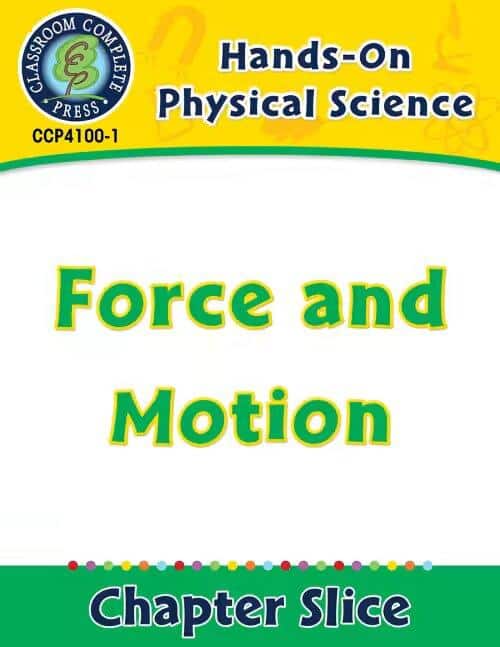
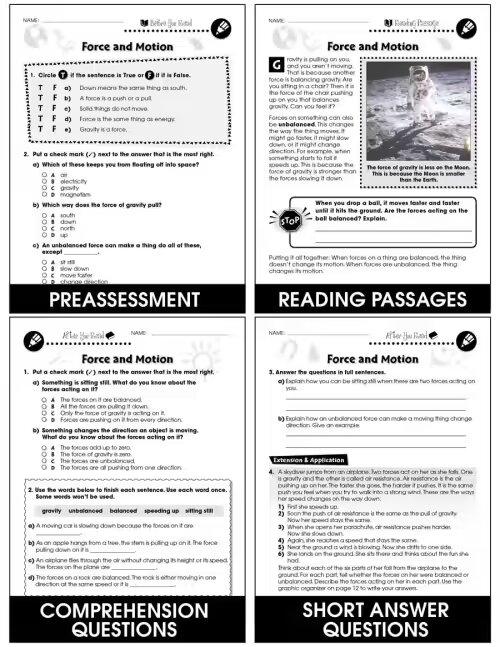
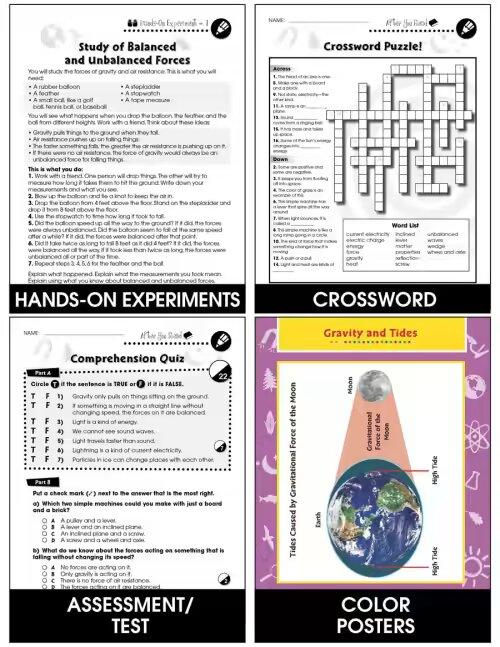
- Oreo Cookie Moon Phases From Hungry SciANNtist
Learning the phases of the moon can be challenging. So why not make it fun by using Oreo cookies to model each phase of the moon?
Students can easily create their own model in groups or individually.
Then have students review the moon phases using some Moon Phases Flashcards by Fiddleticks Education or this It’s Just A Phase activity to further reinforce the concept by Have Fun Teaching.
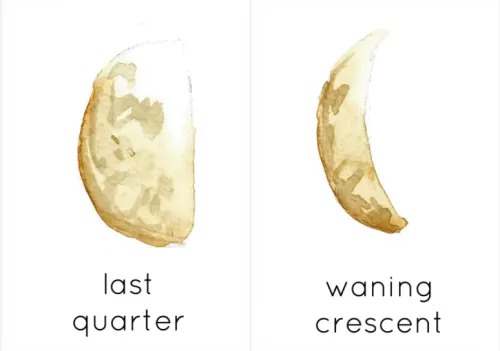
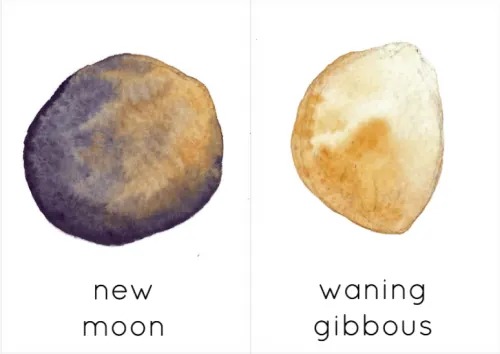
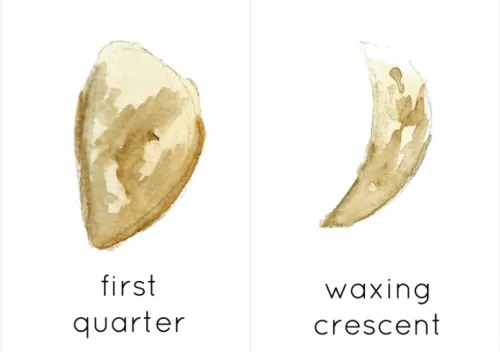
- Rolling Pin Pulley From STEM With Mr. C
In this first grade science fair project, children will learn the mechanics of simple machines by constructing their own pulley. Engage students in a discussion about where they might see pulley systems in the world around them.
Then, use a Hands-On Physical Science: Simple Machines activity pack to introduce the mechanics behind simple machines by Classroom Complete Press.
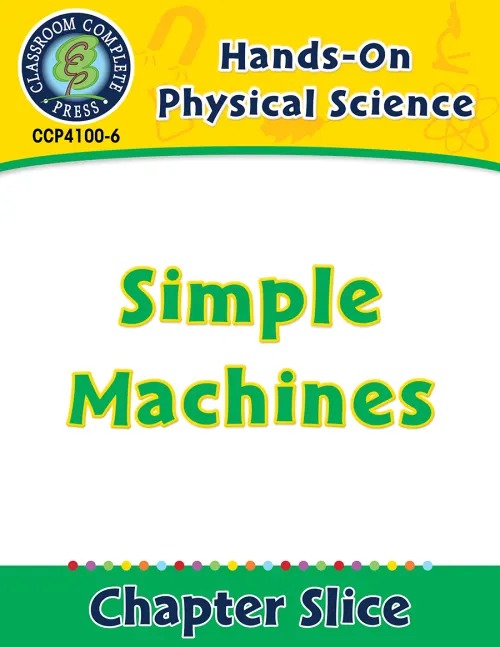
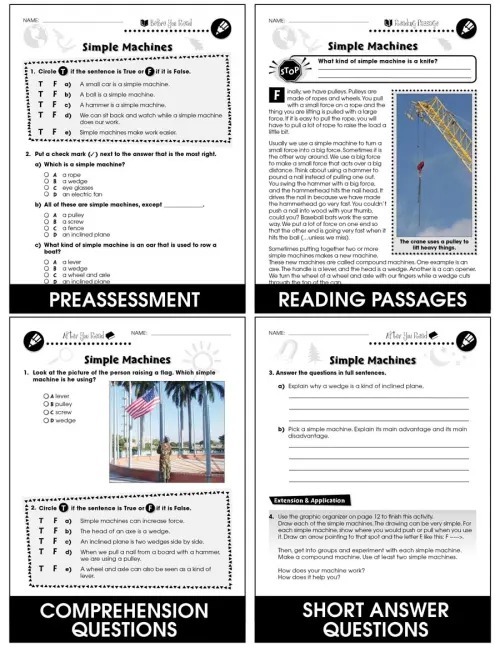
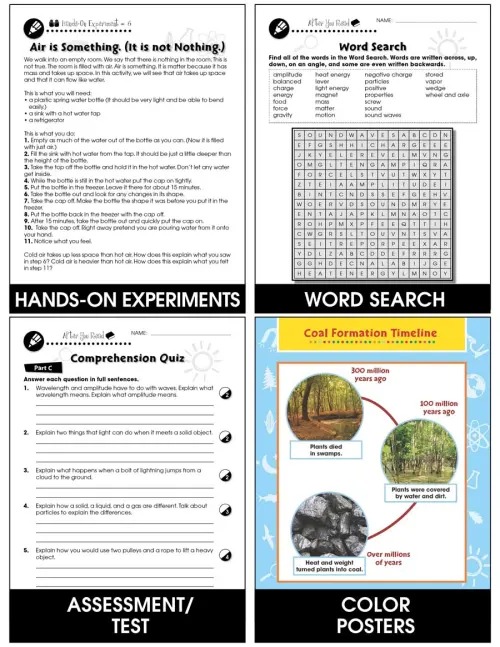
- How Does Composting Work? From Educational Insights Store
Americans waste about a pound of food per person each day. Composting has become a popular way to let food waste decompose rather than throwing it away. But how does it work?
Try out this easy classroom compost kit and let students make observations over a number of weeks as they watch what happens when different types of materials decompose.
This project can be an extension of Teach Simple’s lesson on the Flower Life Cycle by My Kind of Crazy or Watermelon Life Cycle by My Kind of Crazy.
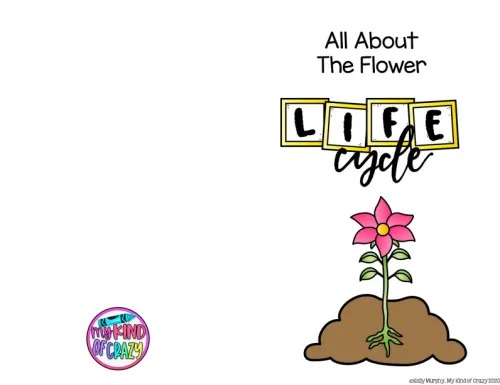
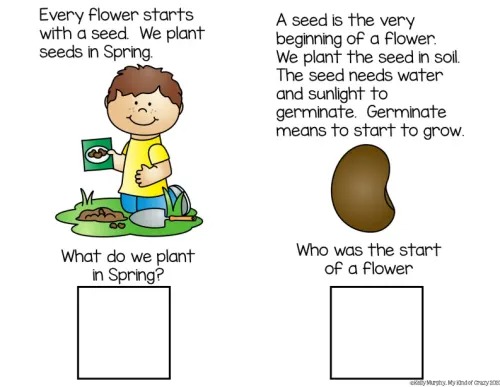
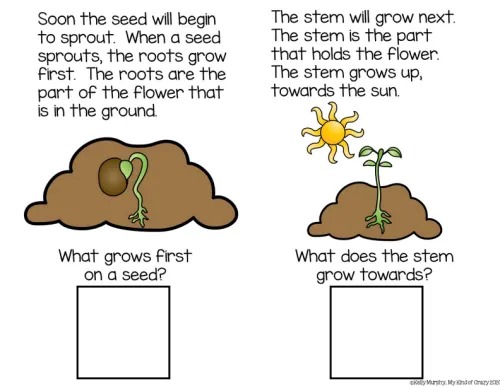
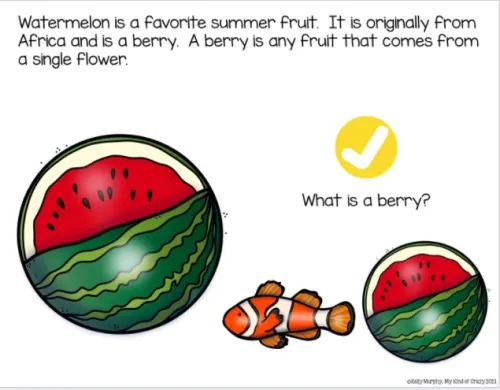
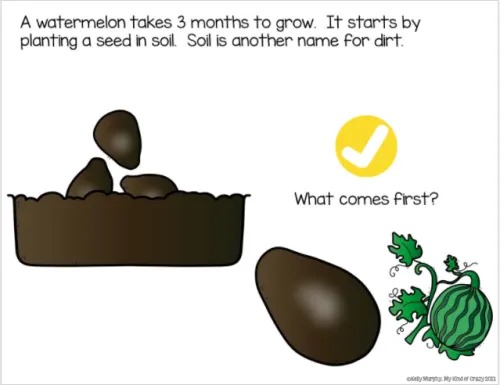
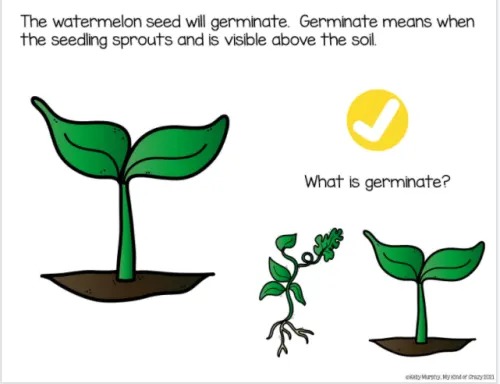
- Fun With Ramps By Twin Sisters Digital Media
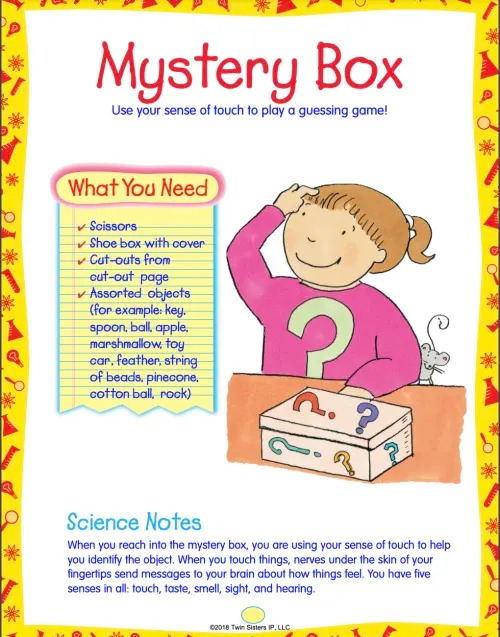
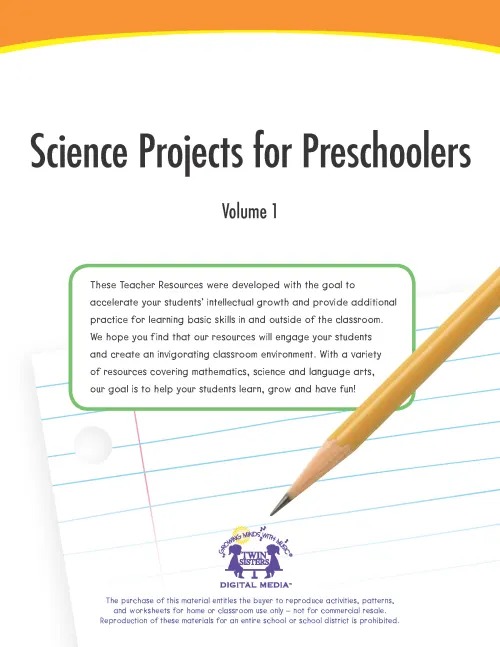
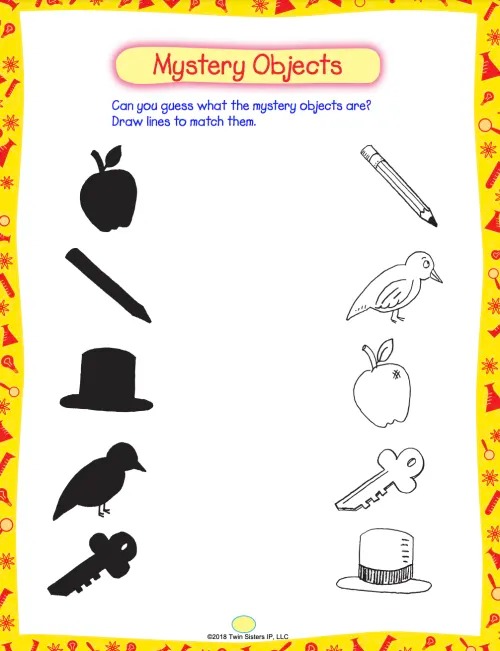
The perfect 1st grade science project can be found in Teach Simple’s Science Projects: Volume 1 resource. Your 1st graders will have fun sending different objects down ramps and comparing how far each object travels. They can also change the incline of the ramp to test whether that affects how far objects will travel.
Supplies you’ll need:
- Flat moveable surface to use as ramp
- Rollable objects
- Marker Chromatography From Science Kids
This fun experiment combines science and art. Students will learn how substances are made up of more than one component by separating colors from ink samples through the capillary action of the water traveling through filter paper. The water dissolves the ink, causing colors to separate.
Supplies you’ll need:
- Glass jar
- White coffee filters
- Washable markers
- Craft stick
- Binder clip
- Paper towels
Use this activity in conjunction with other activities from Teach Simple’s Colors Science, Literacy and Math Activity Packet by KP Classroom
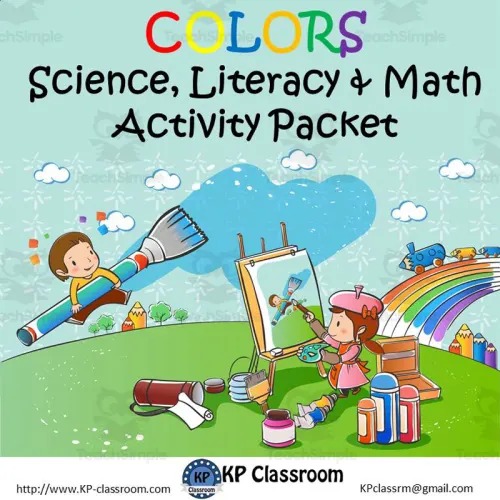
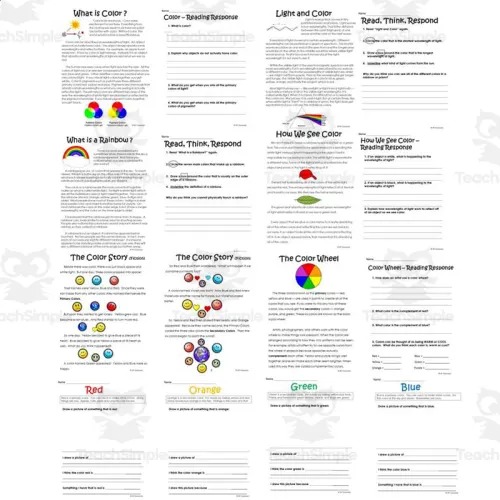
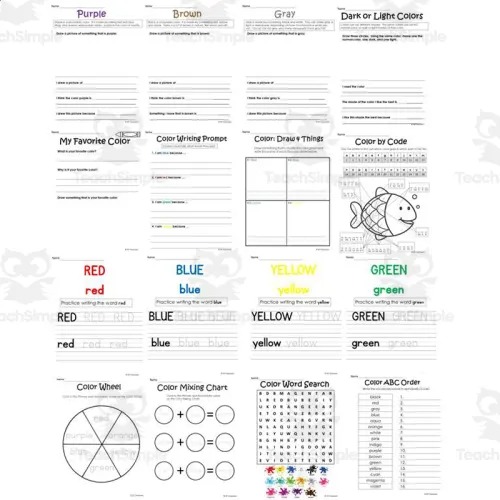
- Experiment With Milk Art From SCIENCE FUN For Everyone!
This experiment allows students to explore their creative side. As children put ink drops into the milk, point out that the drop stays in place. Introduce the concept of surface tension of water. Show how the dish soap breaks the tension.
Supplies you’ll need:
- Milk
- Plate
- Liquid dish soap
- Food coloring
- Toothpick
Teach Simple’s Let’s Investigate! Hands-On Science activity book by Classroom Complete Press, includes a lab investigation worksheet to complete along with this experiment.
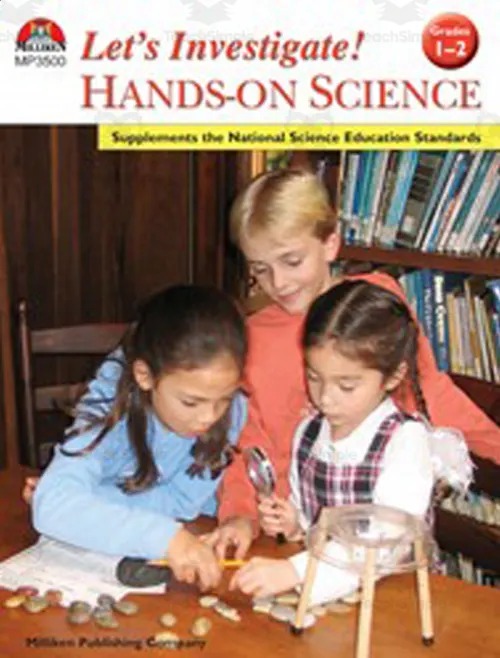
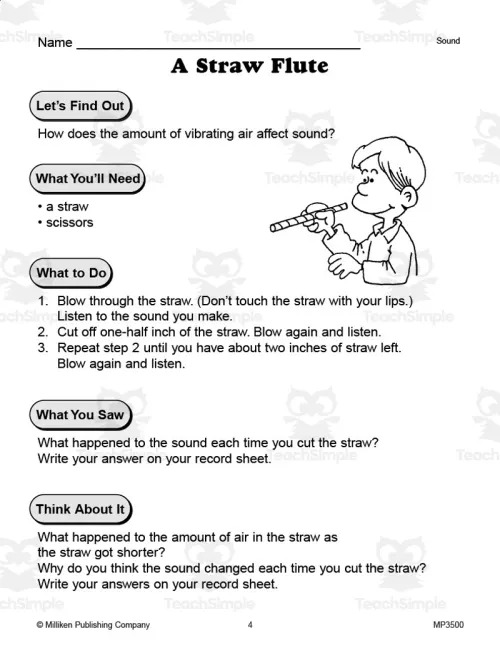
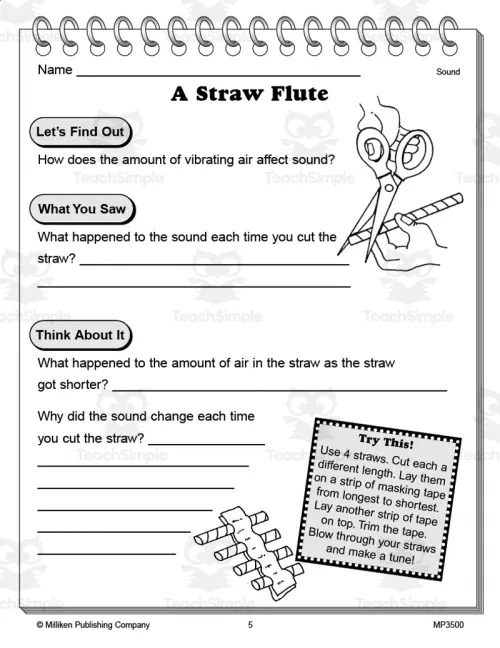
- Make Your Own Bubbles From Howcast
In addition to the fun of creating their own long-lasting bubbles, students will learn about states of matter and mixtures in this fun project.
Supplies you’ll need:
- Water
- Liquid dish soap
- Optional: Glycerin
- Straw
Use this lab as an extension of Teach Simple’s States of Things States of Matter activity pack by Have Fun Teaching.
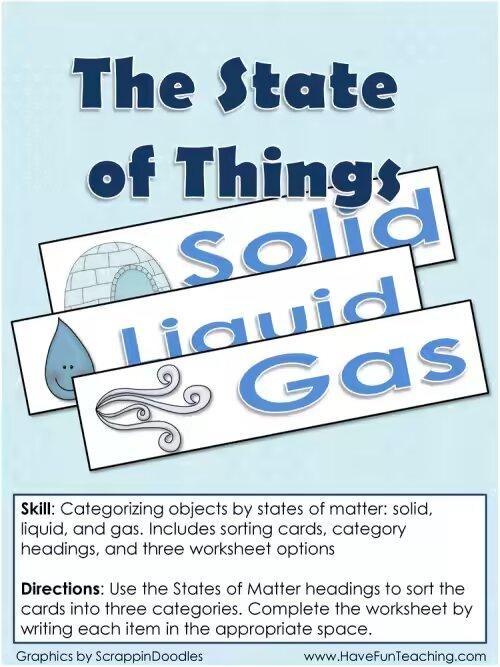
- Evapotranspiration In Plants From MooMooMath And Science
We know that plants need water to live, but what happens when they take in more than they need? Small openings in leaves release excess water vapor into the atmosphere in a process called evapotranspiration. This is an important part of the water cycle.
Supplies you’ll need:
- Potted plant
- Clear jar that fits over plant
- Aluminum foil
You can also take the class outside and rubber band a plastic baggie around a leaf on a tree or bush.
Teach Simple’s Water Cycle Printable Activity Book contains materials to teach and review the water cycle with first graders by My Kind of Crazy.
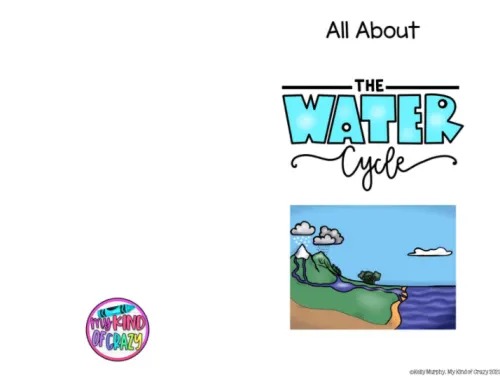
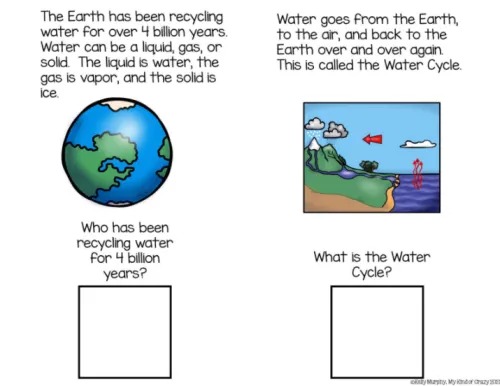
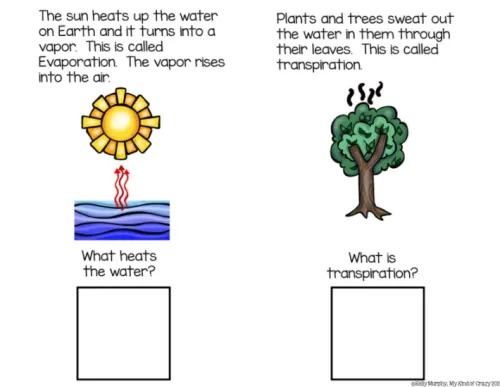
- What Do Plants Need To Grow? By Ready-Ed Publications
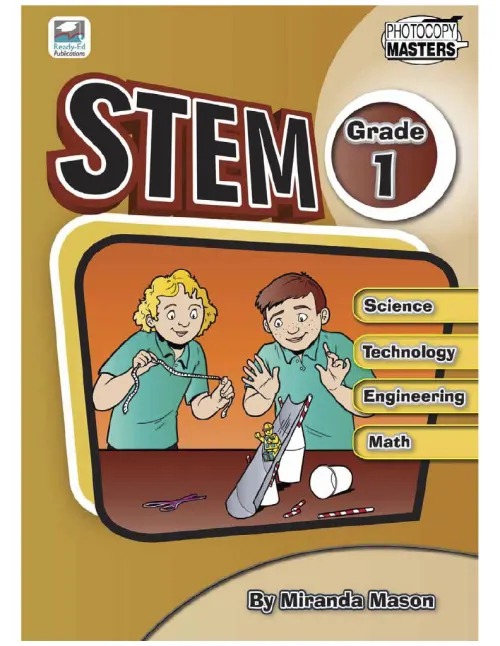
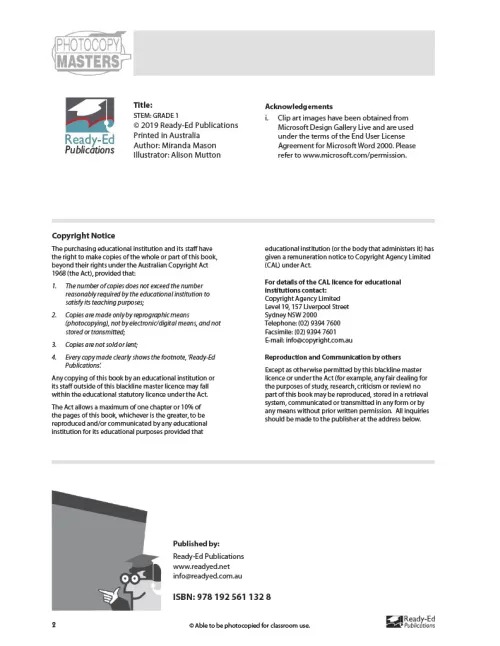
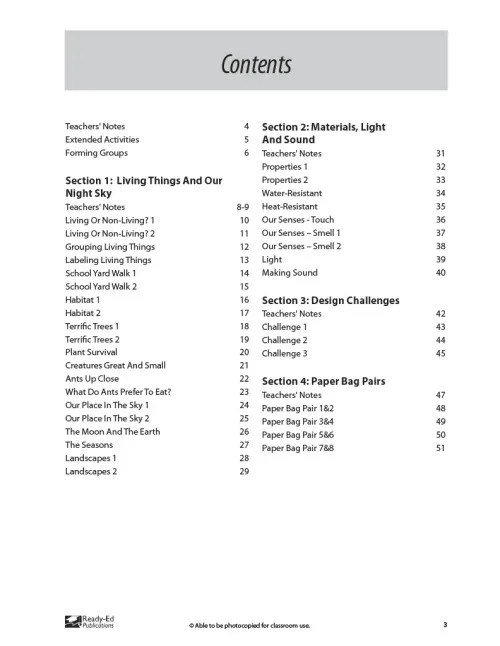
This activity from Teach Simple’s STEM Workbook- Grade 1 teaches first graders that plants need light and water in order to grow. This experiment supports lessons on plants and living vs. nonliving things.
Supplies you’ll need:
- 5 jars
- Masking tape
- Cotton balls
- Soil
- Plant seeds
- Water
- Make Your Own Anemometer From Go Science Girls
Teach kids about how to measure wind by building anemometers. Pair this fun 1st grade science project with the Weather Wise! lesson plans on weather and forecasting.
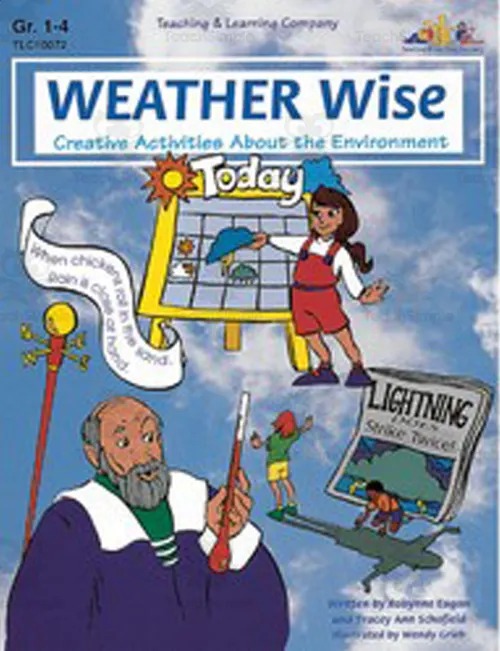
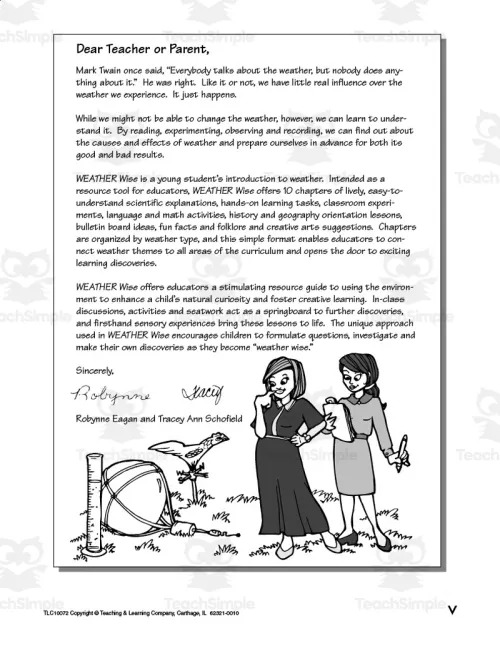
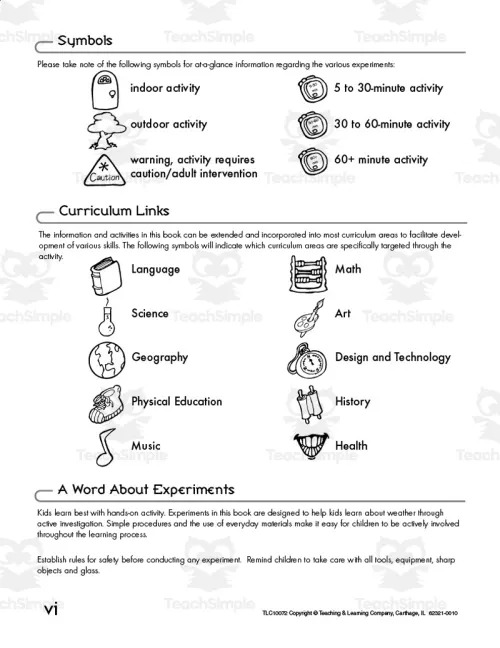
After building their anemometers, students can measure wind speeds and collect data to make weather forecasts.
Supplies you’ll need:
- 5 small disposable cups
- Thick cardboard
- 2 straws
- Pencil
- Pin
- Nail
- Hole punch
- Glue
- Pencil
- Compass
- Which Foods Are The Best Conductors? From
SkelangDirect
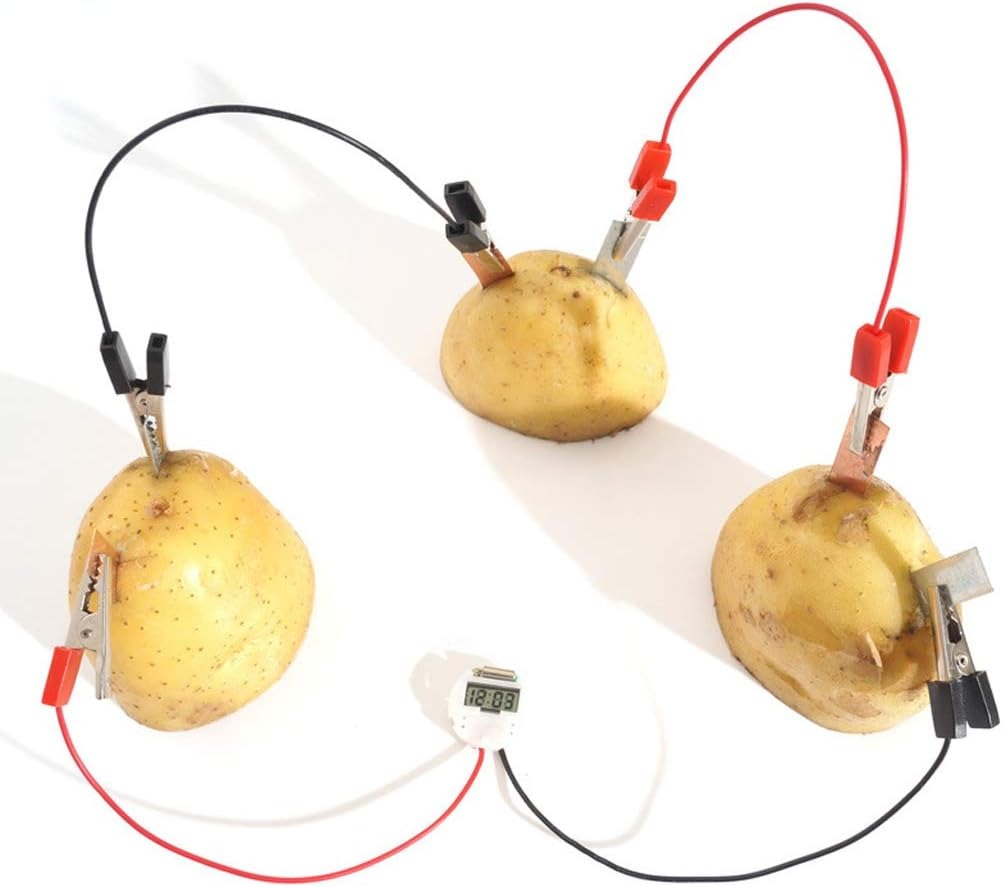
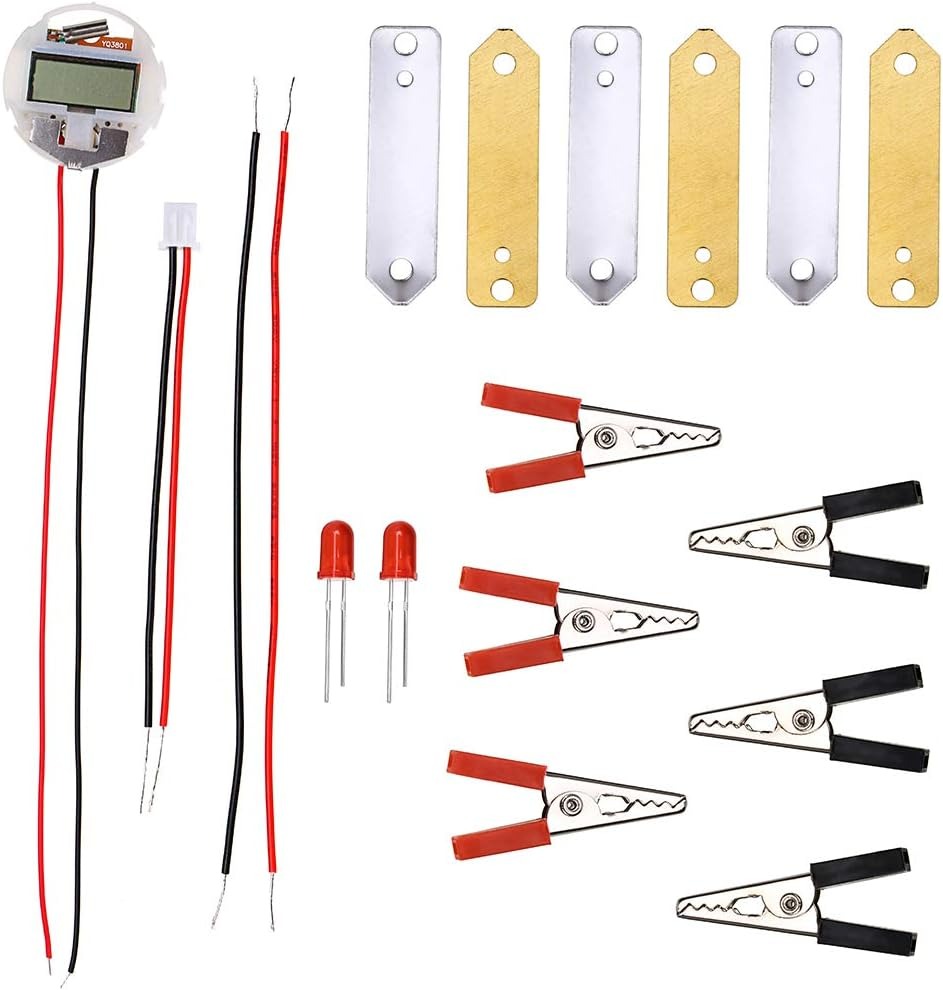
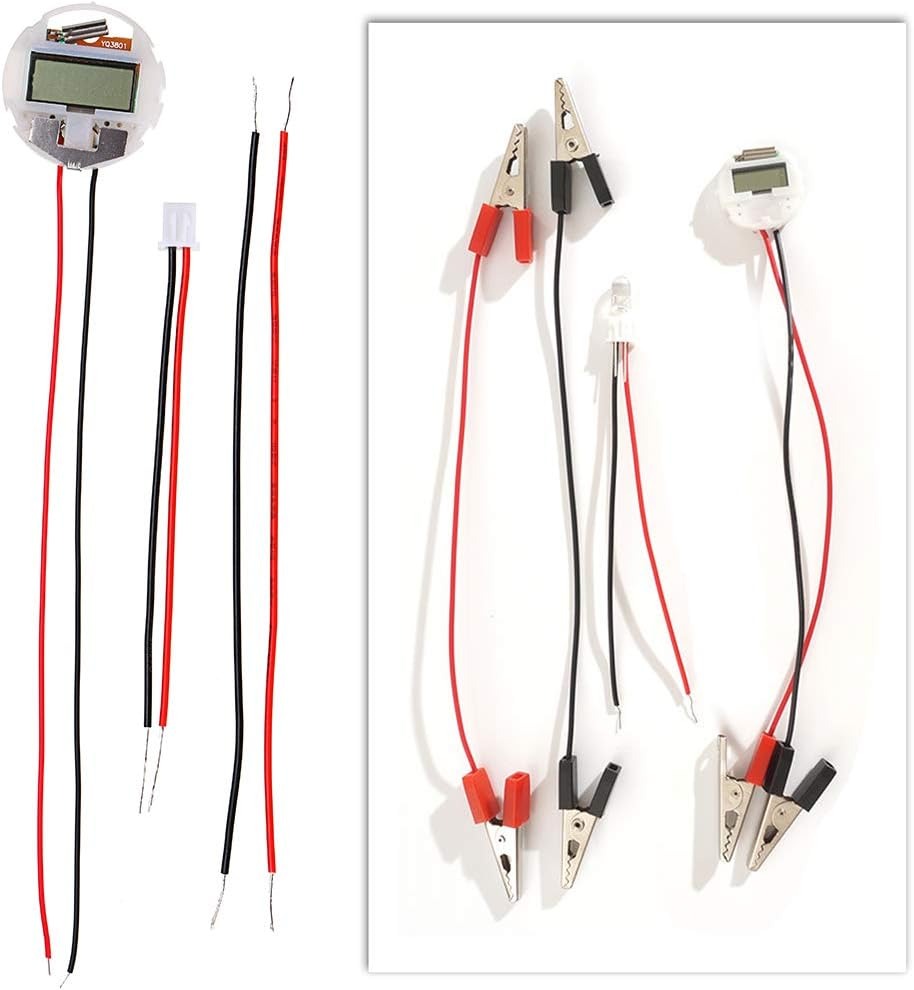
This 1st grade science fair project teaches students about how energy is conducted and the difference between conductors and insulators. The kit below includes all of the materials needed to get this project started.
Have students record their observations on Teach Simple’s Science Observation Journal Pages by Kindergarten Cafe.
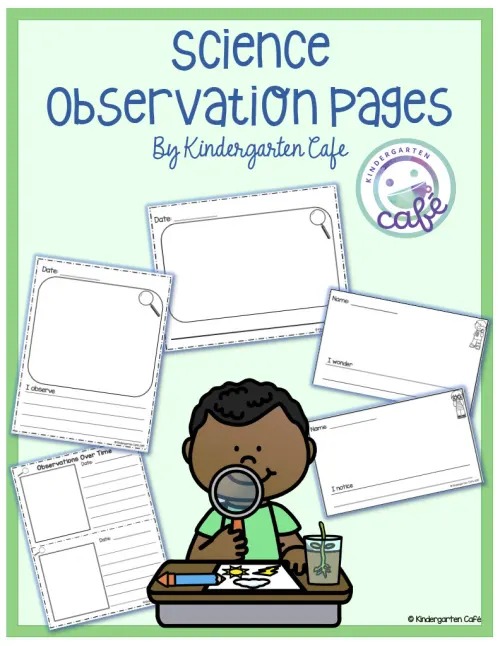
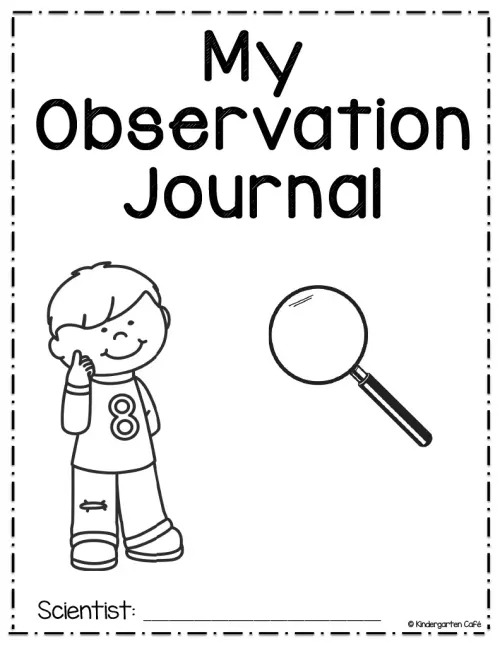
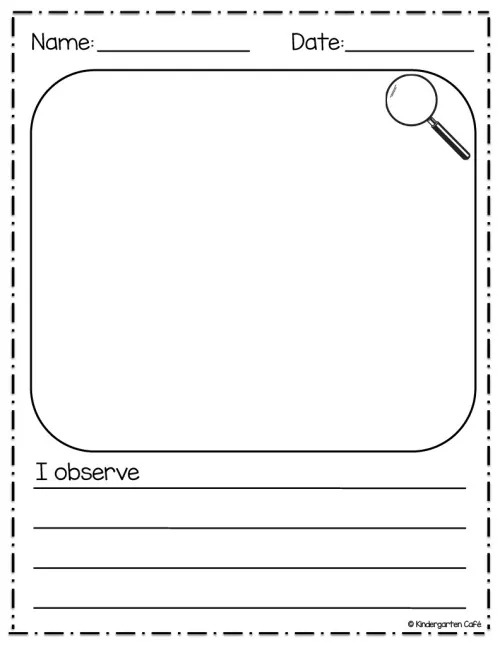
- Which Colors Absorb The Most Heat?
The procedure for this first grade science fair project is included in Teach Simple’s Let’s Investigate! Hands-On Science activity book. First graders will learn that darker colors absorb more heat while lighter colors reflect it. Engage students in a discussion about practical applications of this knowledge.
Supplies you’ll need:
- Different colors of construction paper
- Scissors
- Tape
- Newspaper
- Ice cubes
What are some easy science projects?
Science experiments do not have to be complicated and time consuming to be rewarding. For example, the Oreo Cookie Moon Phases Model mentioned above is a fun way to teach first graders why the moon appears to be different shapes throughout the month. Children can compare their model with their Moon Phases Flashcards to check the accuracy of their edible model by Fiddleticks Education. With a quick and simple setup, this project is easy for kids and teachers to use and understand.
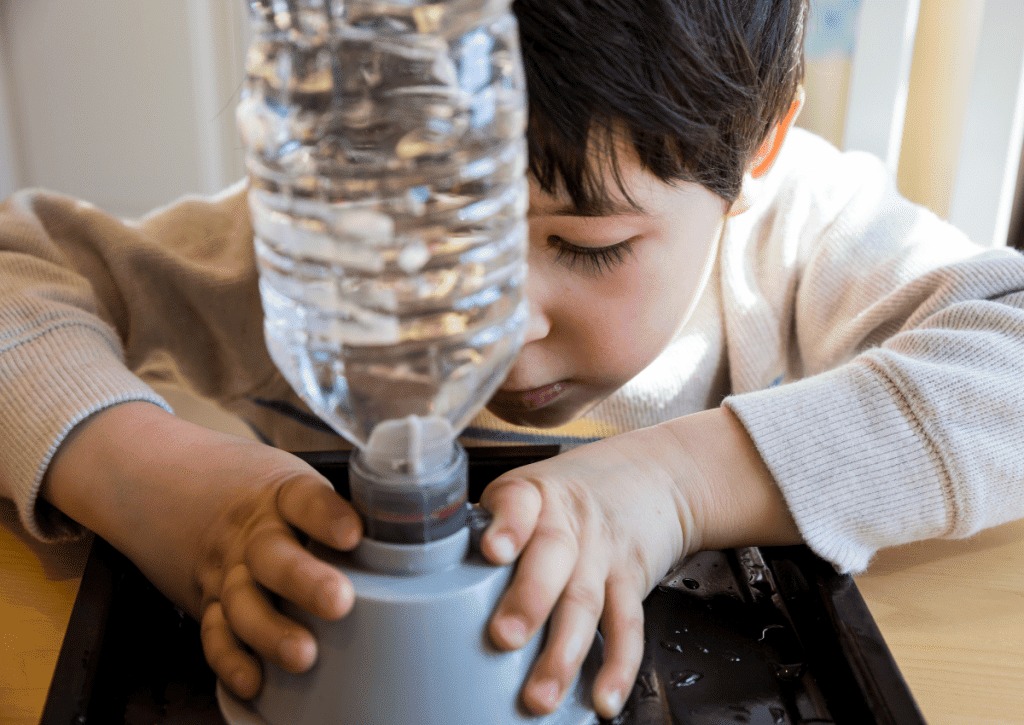
If you’re looking for more easy setup experiments, Teach Simple’s STEM Workbook has more simple yet engaging science projects. The key to 1st grade science projects is to make them interesting and relatable to your students, no matter the difficulty level.
Check Out These Additional 1st Grade Resources
About the Author
Kelly Rende has a Masters degree in Special Education. She has been teaching middle school science and STEM courses for 18 years. When not teaching, she can be found writing or on an adventure with her children and dogs.

